- APPS
- Machine Repair Management (All Types of Machines) 16.0
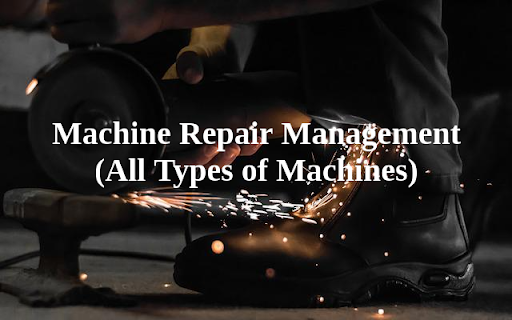
| Technical name | machine_repair_management |
| License | LGPL-3 |
| Website | http://www.probuse.com |
Machine Repair Management
All Types of Machines Repair Odoo App
Machine Repair Request Management with Machine Diagnosys and Job Order / Work Order
This app allows you to manage machine repair businesses/shops/workshops. It will allow your customer to create machine repair requests from your website and it will be recorded in the backend as a machine repair request as shown. It also allows you to do machine diagnosis and job order/work order.
Main Features:
- Your customer can send machine repair requests from your website and also attach documents/images as attachments while submitting requests from the website.
- Generation of unique machine request number/ticket on submission and store it as machine request in the backend.
- Customers can view and check the status of all machine request tickets submitted by them on the portal of your website.
- The system allows your user to do management of diagnosis of machine repair requests and allows you to create sales quotations and send them to your customer.
- Allow your machine repair team to create a job order/work order from the machine repair requests and assign it to the responsible technician or repair user.
- Allow your team to configure machine repair teams, services, and service types under the configuration menu.
- Allow you to configure and manage machine and machine parts as products.
- Allow you to set the machine repair-related images on the machine repair form.
- Allow your user to print a PDF of machine repair request report as shown per the sample below.
- Machine request user/technician / internal users can communicate with customers using chatter and fill in timesheets.
- The machine request manager can close machine repair tickets and send bills to customers (Billing from Quotation created from Diagnosys).
- Customers can give feedback and rating of machine repair request jobs done.
- Allow you to manage your machine request tickets using an assignment to the machine repair team.
- Customers can check the status of all machine request tickets submitted by them on the My Account page of your portal
- Reports -> Machine Request in PDF, Machine Repair Label, and Machine Repair Analysis available as shown in the below screenshots.
- For more details please check below screenshots and video in the live preview button.
- For more apps related to features of Machine Repair, you can check our app bundle using the link https://apps.odoo.com/apps/modules/16.0/machine_repair_bundle/
Roles by Users:
-
1. Customer
- Customers can create/submit machine repair requests from websites.
- Customers can view their own submitted requests in my account portal of your website.
- The manager can assign requests to a repair User/Technician.
- The manager can create machine diagnosis from the repair request.
- The manager can create a work order/ job order from a machine repair request.
- A print pdf report of the machine repair request.
- The manager can close the ticket request at the end of the machine repair.
- Managers can also create quotations from diagnosis.
- They can fill out the timesheets.
- Repair users can see and manage machine repair requests assigned by the repair manager.
- Repair users can create and manage work orders and work on work order/job orders.
- Repair users can also create and manage machine diagnosis from machine repair requests
- Repair User / Technician can communicate with customers.
- They can fill out the timesheets.
- Sales users can send quotations by email to customers and work on quotations to make it order and then create invoices from the order. (Odoo Standard process).
2. Repair Manager
3. Repair User/Technician
4. Sales User
Role of customer
Role of repair manager
Role of repair User/Technician
Role by sales user
Menus Available:
- Repair
- Configuration
- Service
- Service Types
- Machine Repair Teams
- Machine Repairs
- Machine Repair Tickets
- Machine Diagnosys
- Machine WorkOrders
- Machines
- Machines
- Machine Parts
- Reports
Note: There are two groups 1. Repair User/Technician and 2. Repair Manager -> This groups are created by system so you will have to go to user form and tick it so you can see repair app in list.
Edition Compatibility:
Enterprise Odoo.sh Community
Machine Repair Team - Form View
You can create different Machine Repair teams and assign Machine Repair tickets to Machine Repair team responsible to do that job.
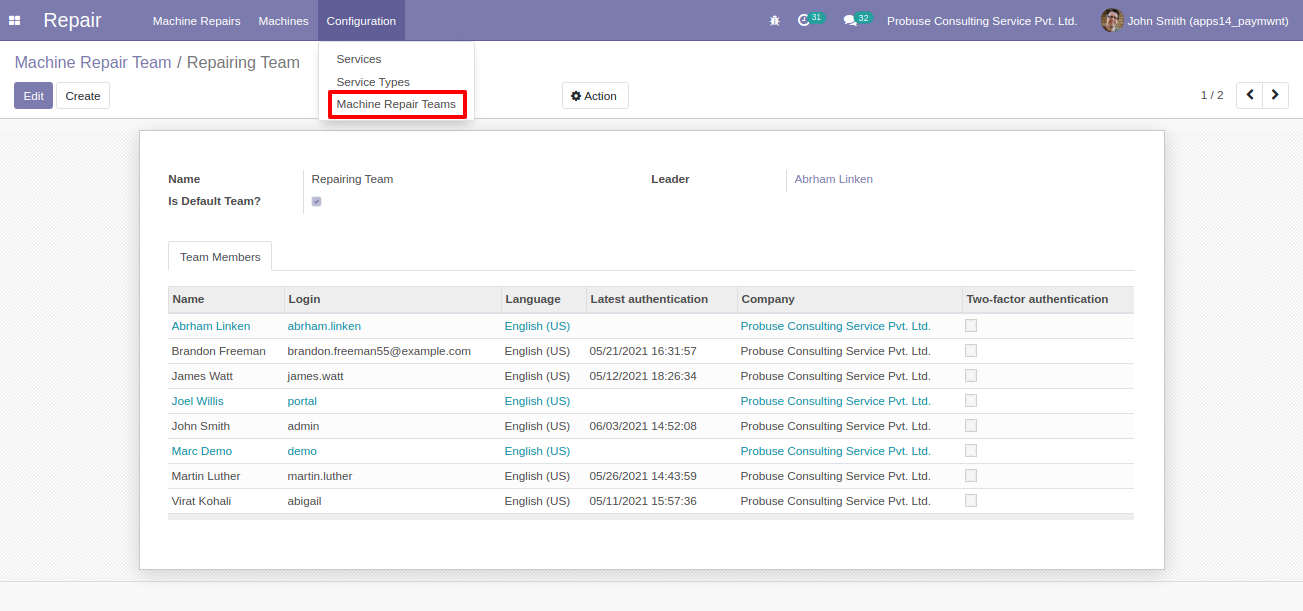
Machine Services Configuration
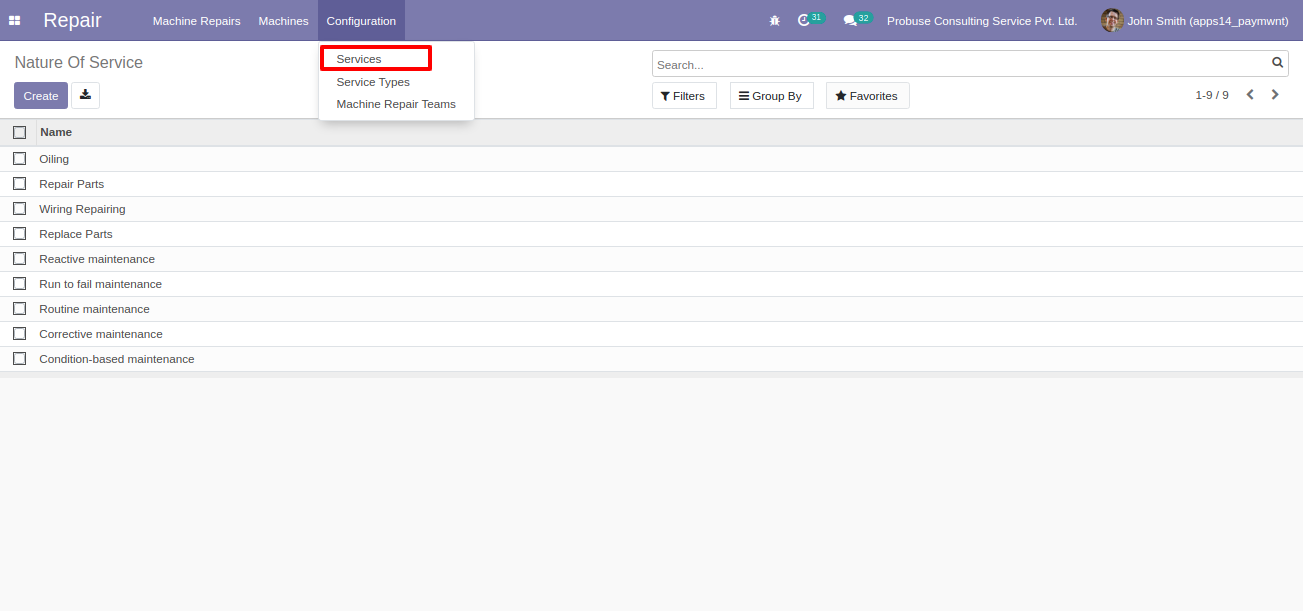
Set Machine App Related Group on User
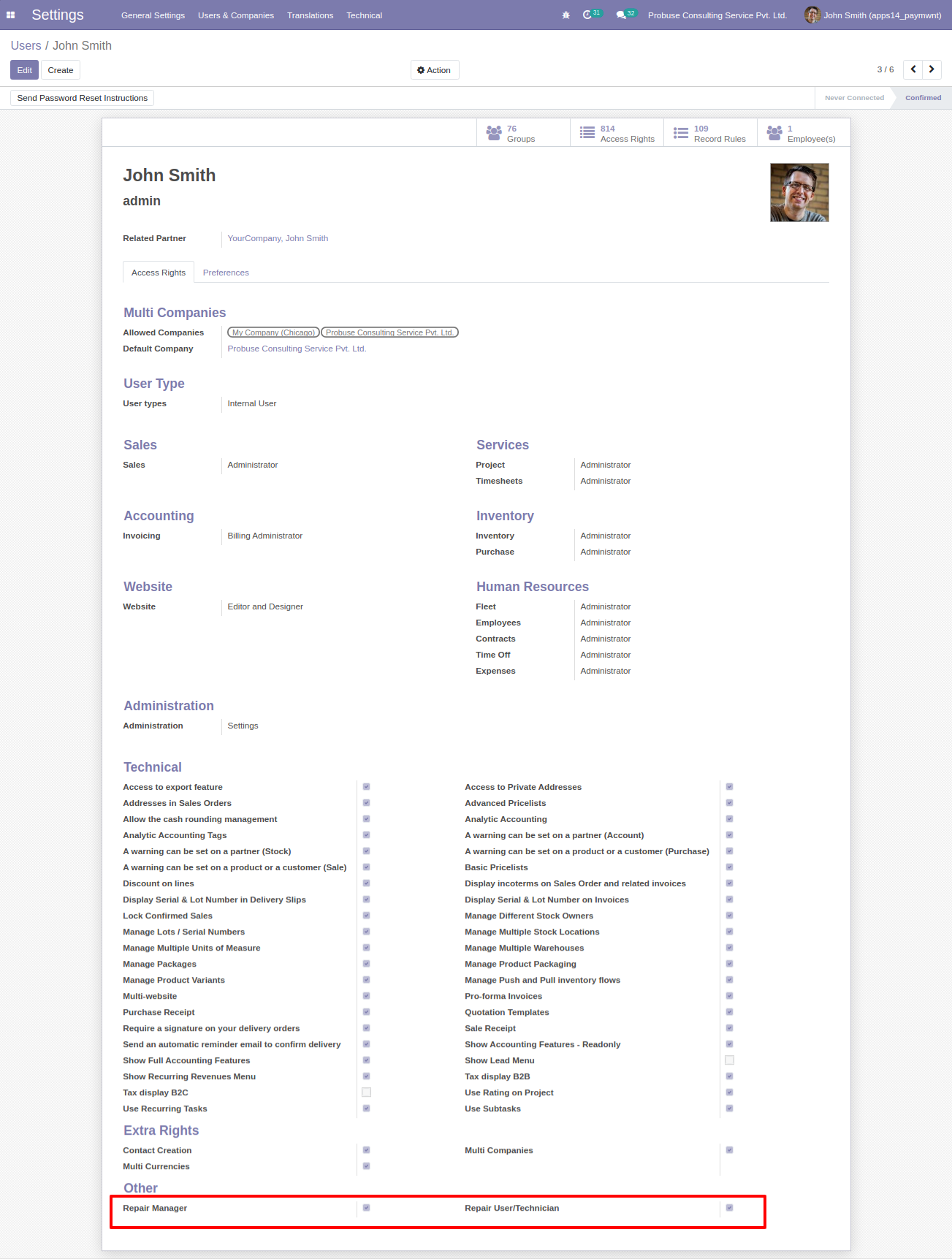
Machine Service Type Configuration
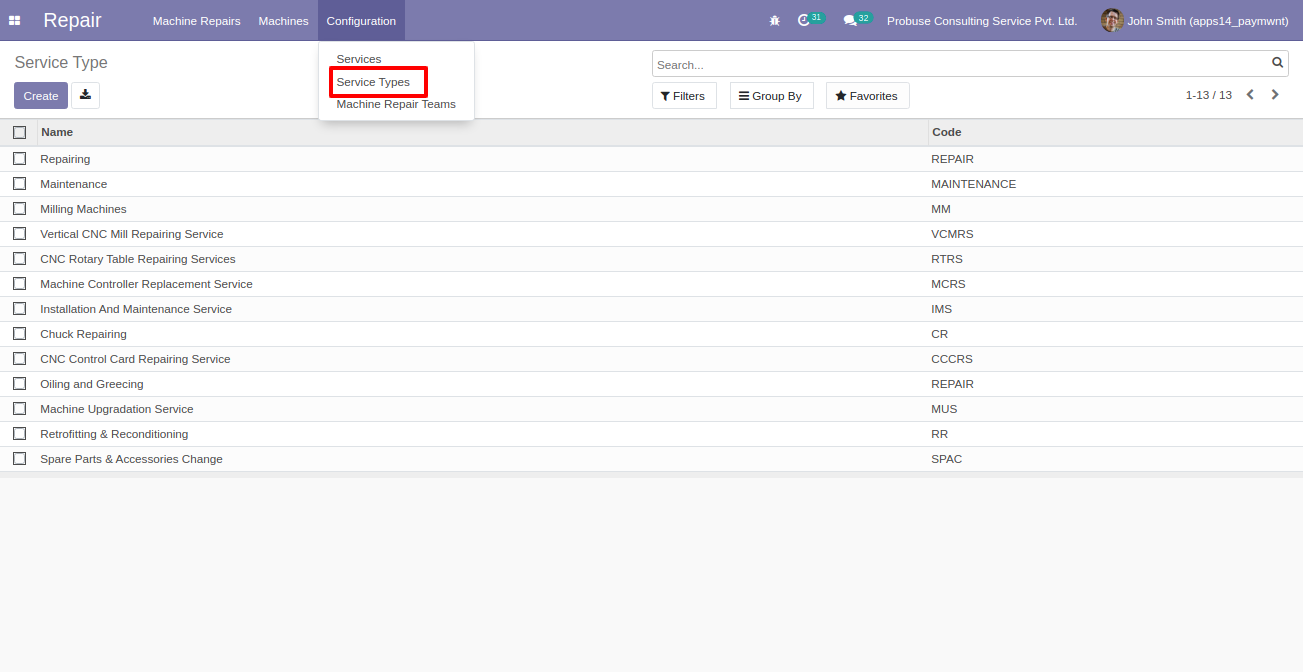
Machines List View (Product)
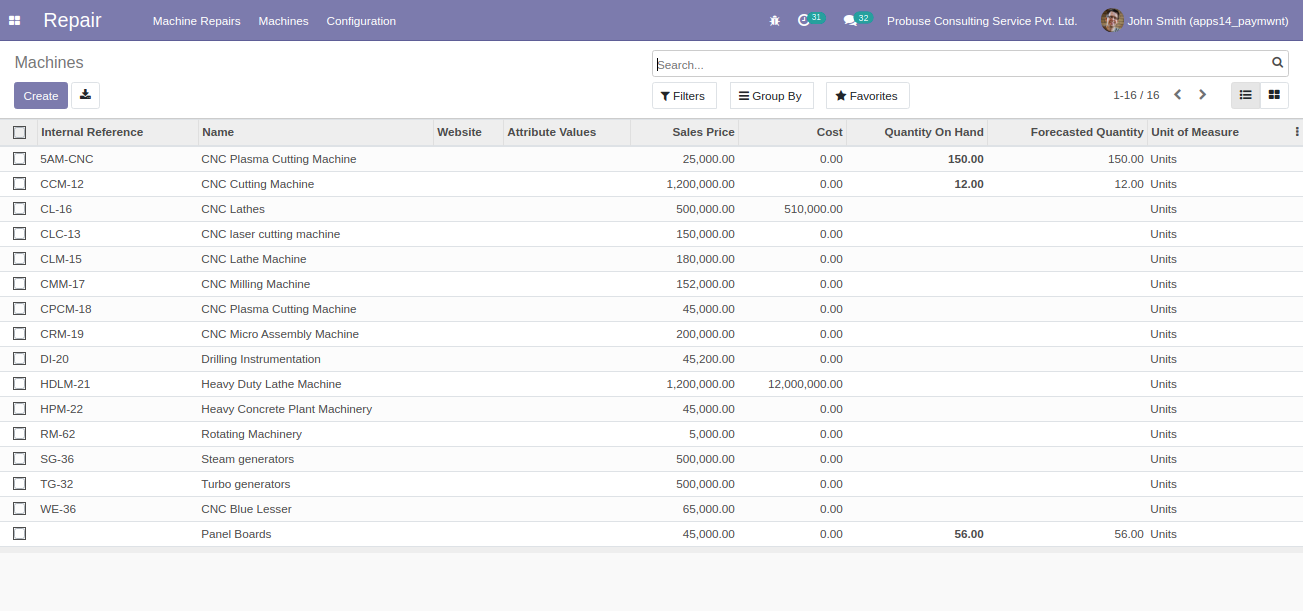
Machines Kanban View(Product)
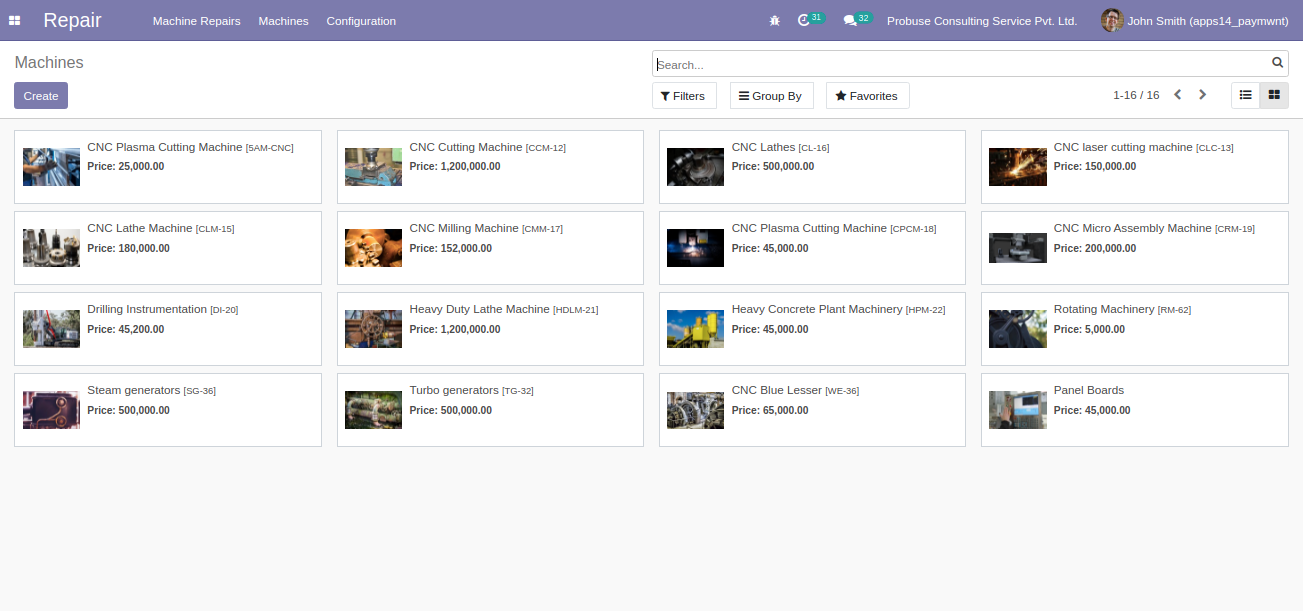
Machine Parts List View (Product)
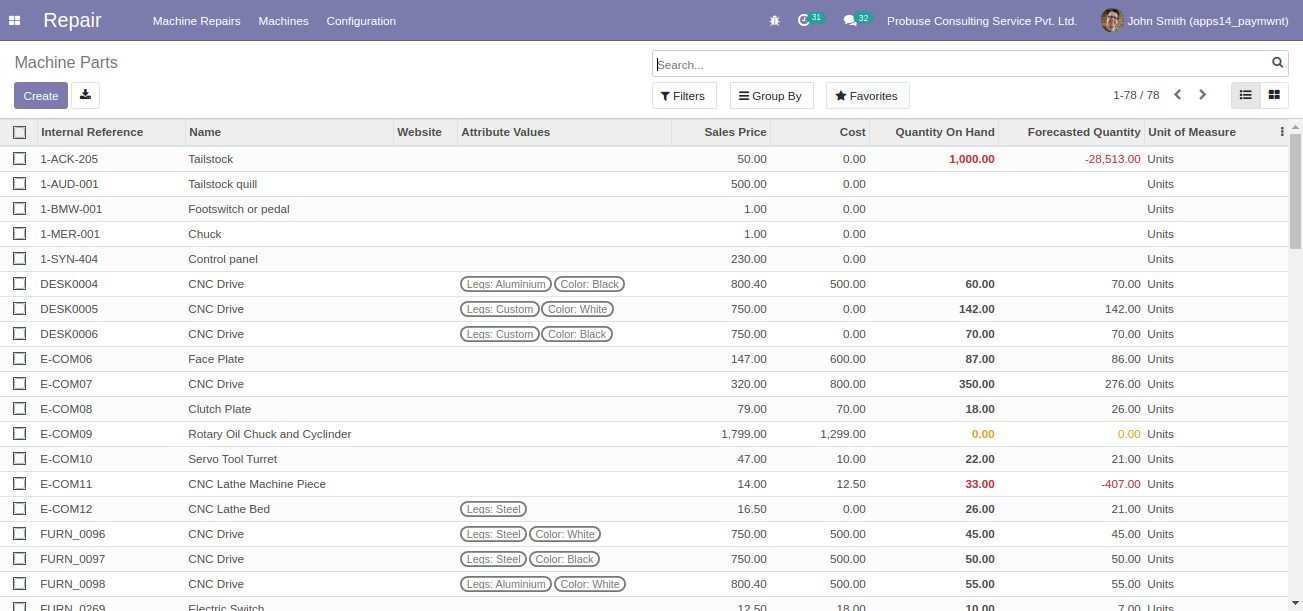
Machine Parts Kanban View (Product)
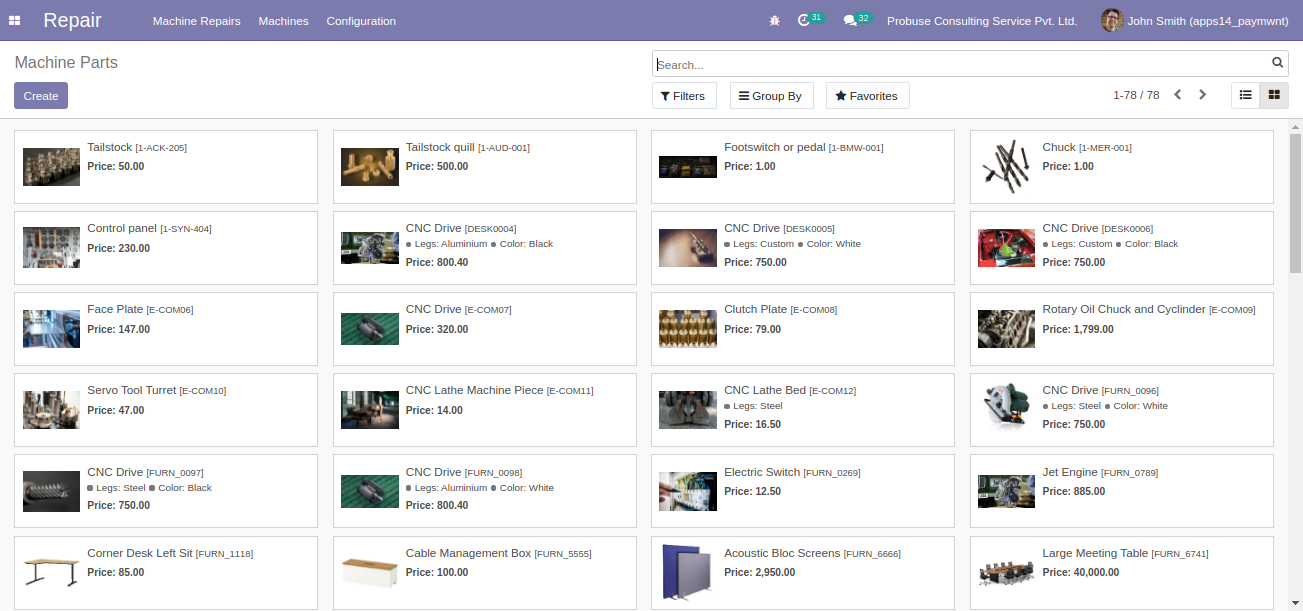
Empty Website Machine Repair Request Form for Customer

Machine Repair Reqest by Customer from Your Website
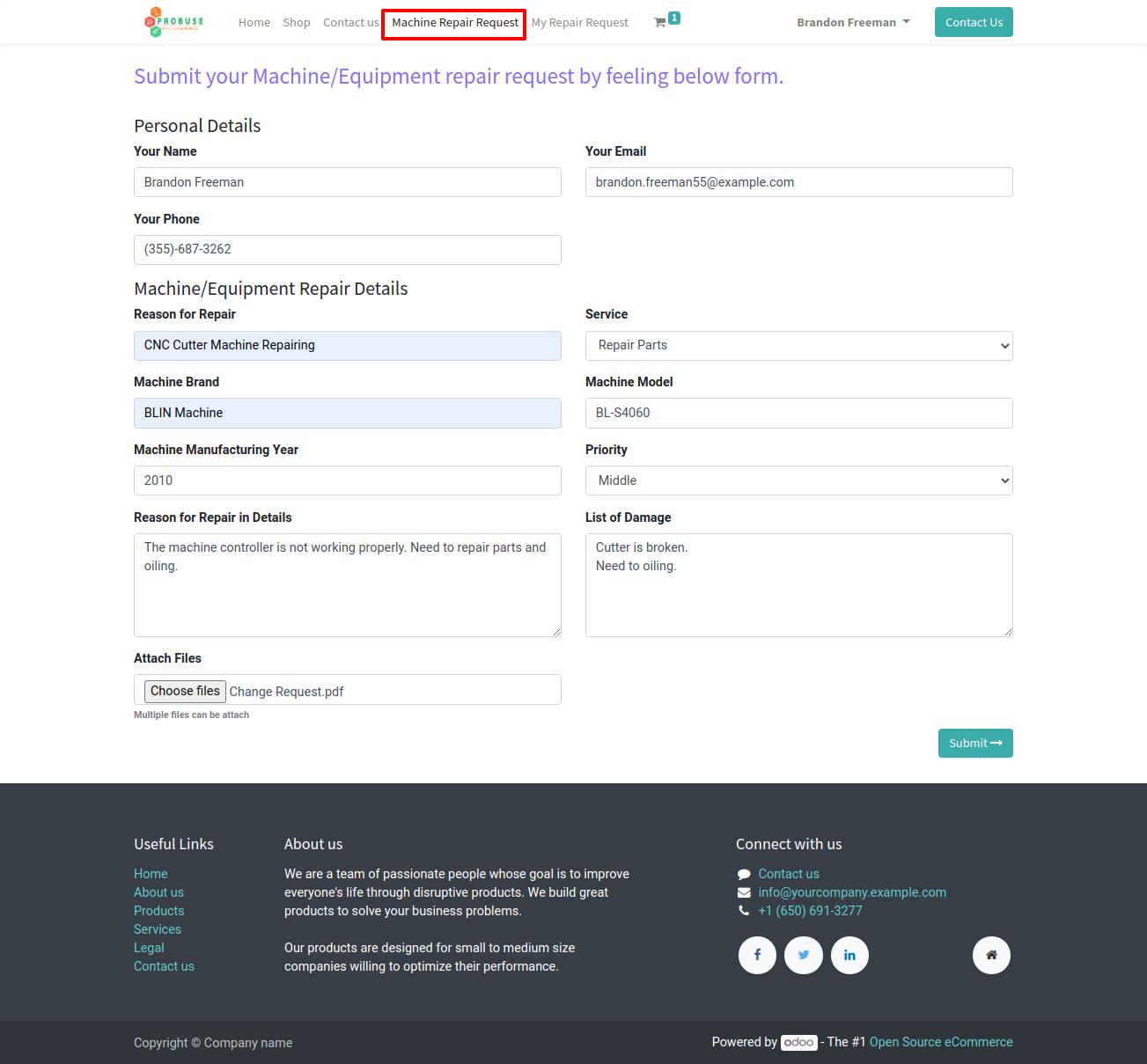
After Submit Customer will have Request Number for Future Reference and Communication.
On submit system will create repair request in backend under default repair team.
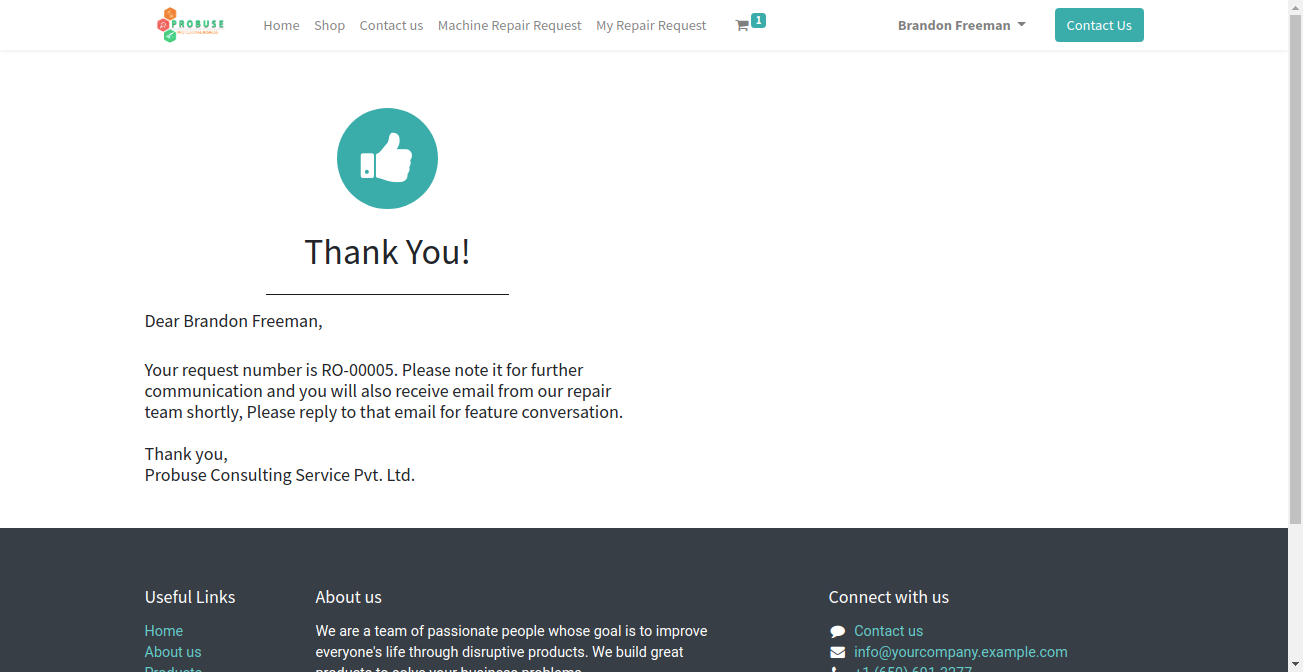
Machine Repair Request Form View [Backend] for Team View
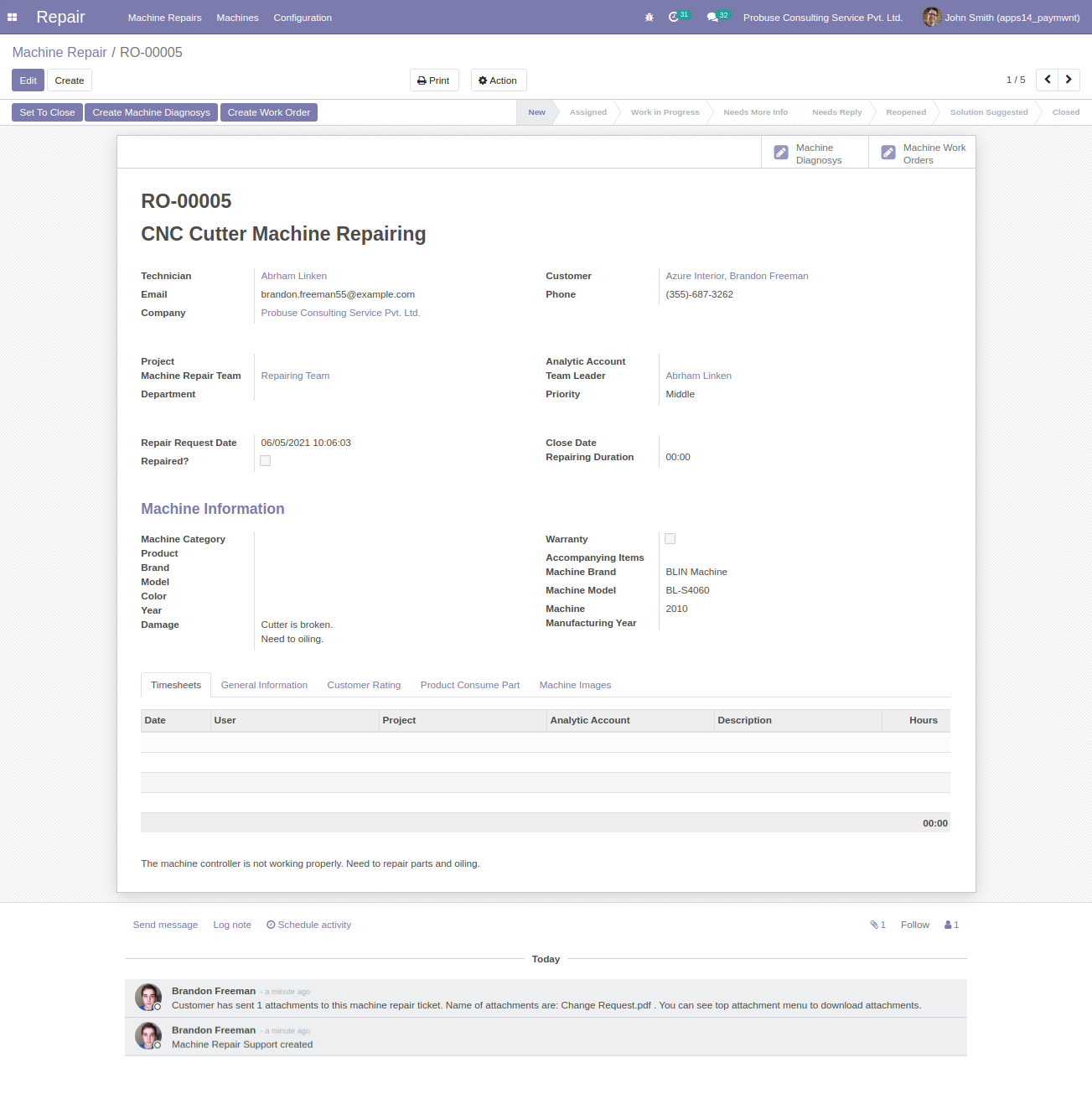
Machine Repair Request with Timesheet Tab (Users can fill Timesheets)
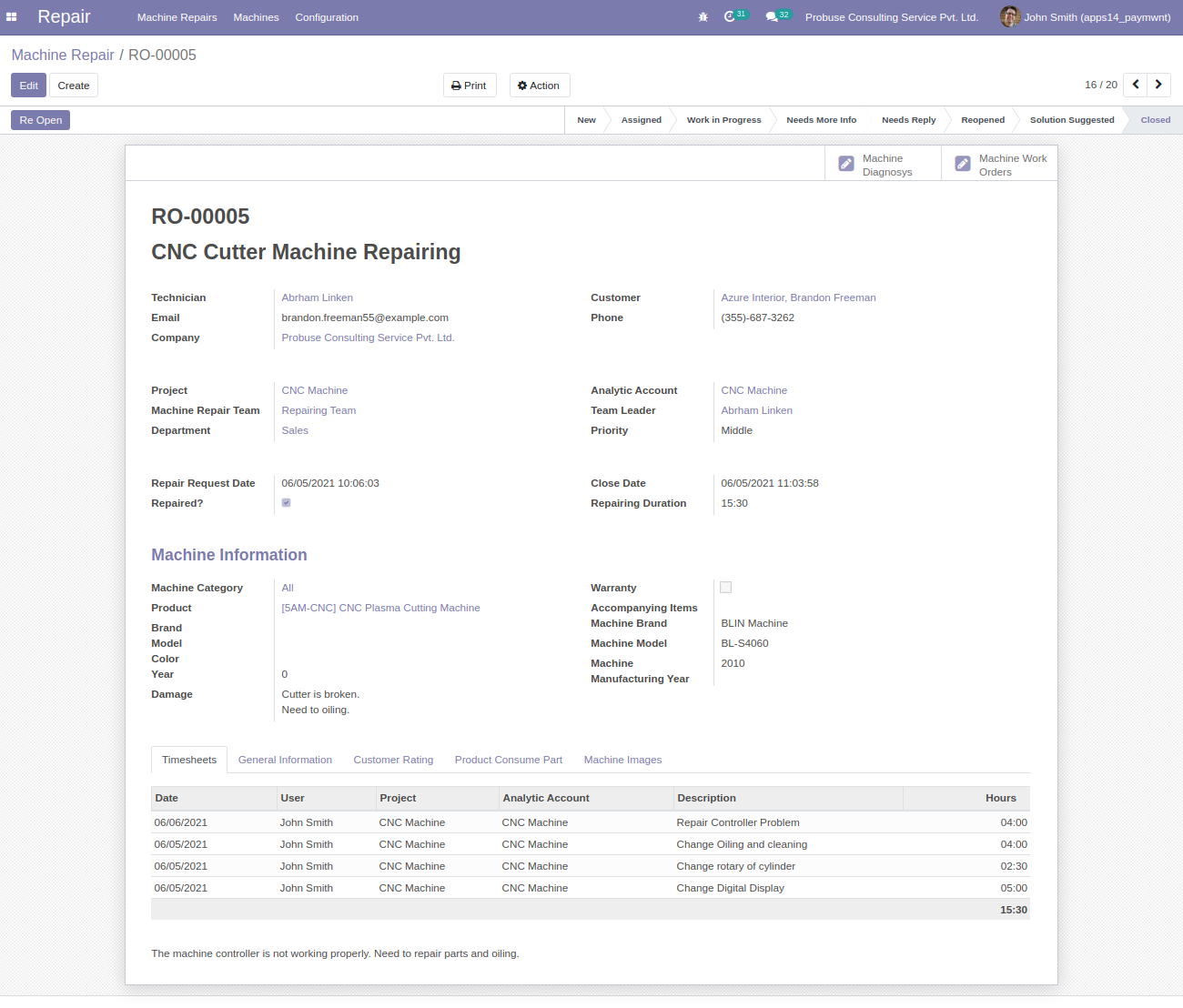
Machine Repair Request Form with General Info Tab
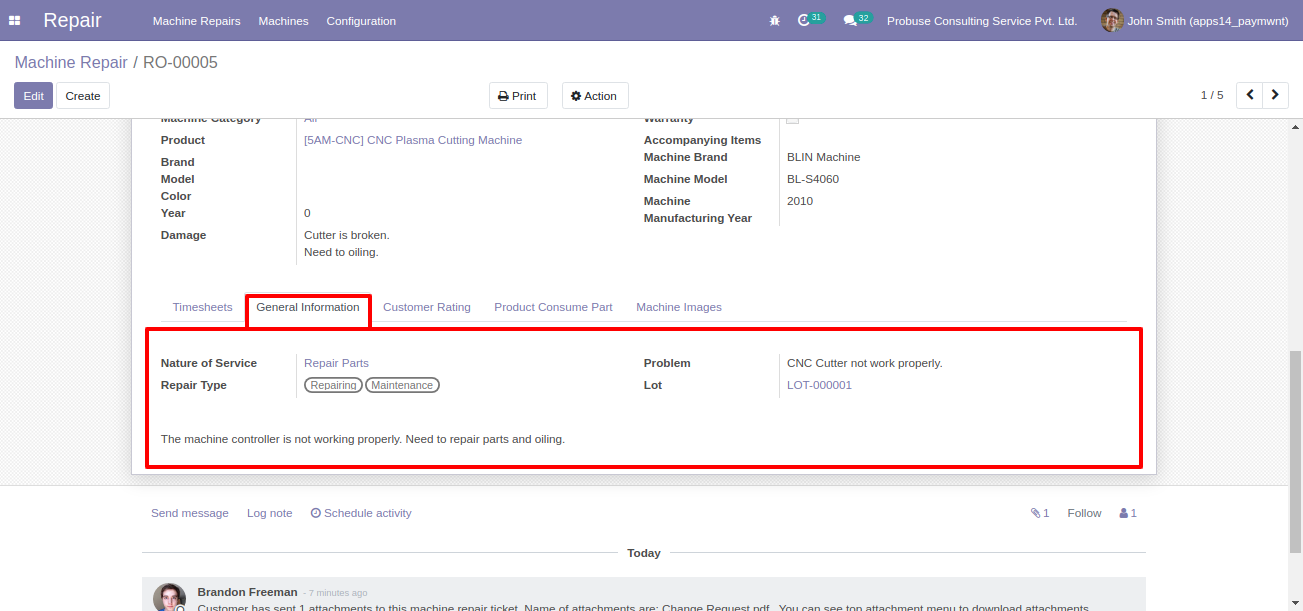
Machine Repair Request with Products Consume Part Tab
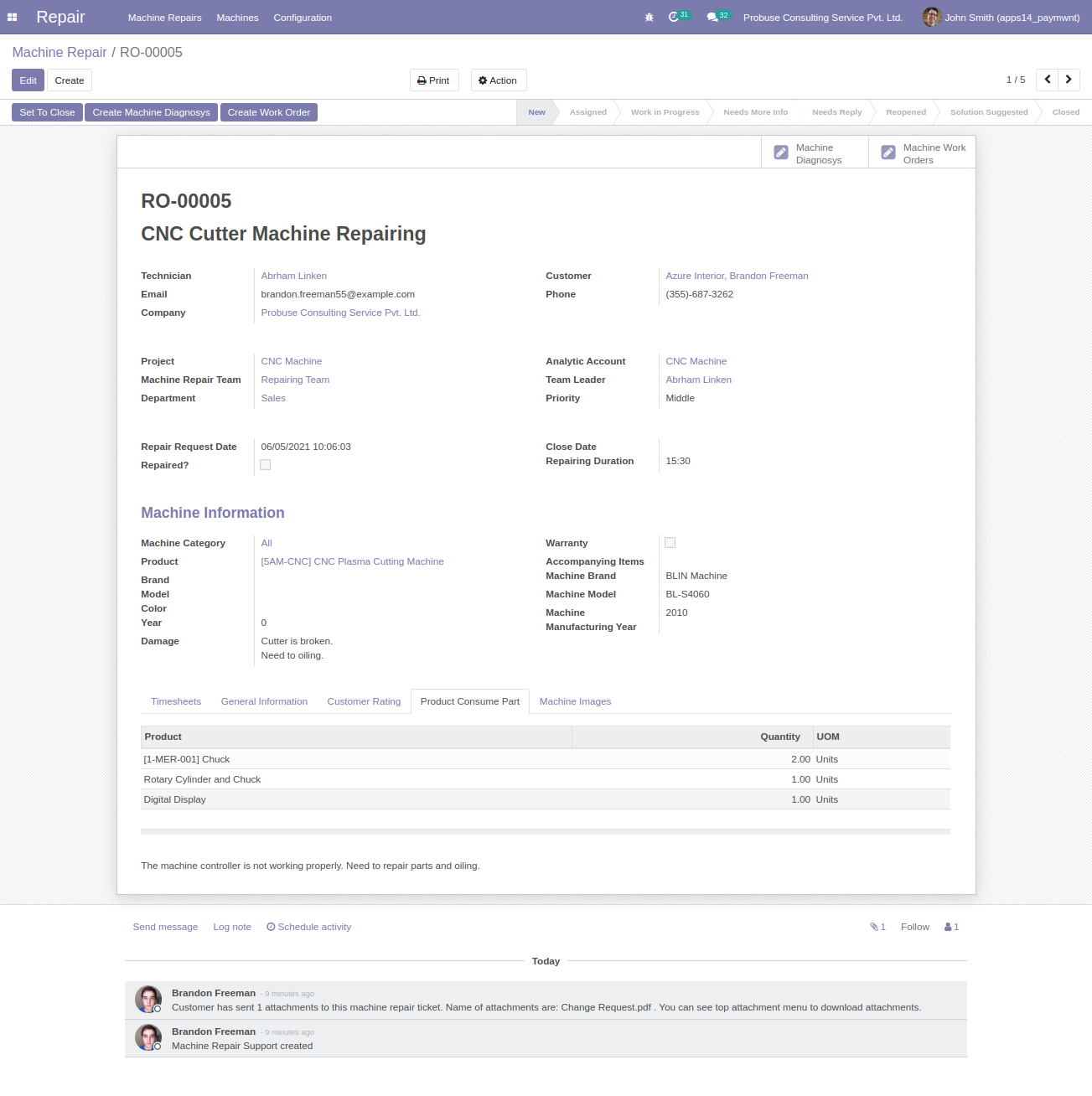
Machine Repair Request with Machine More Five Images
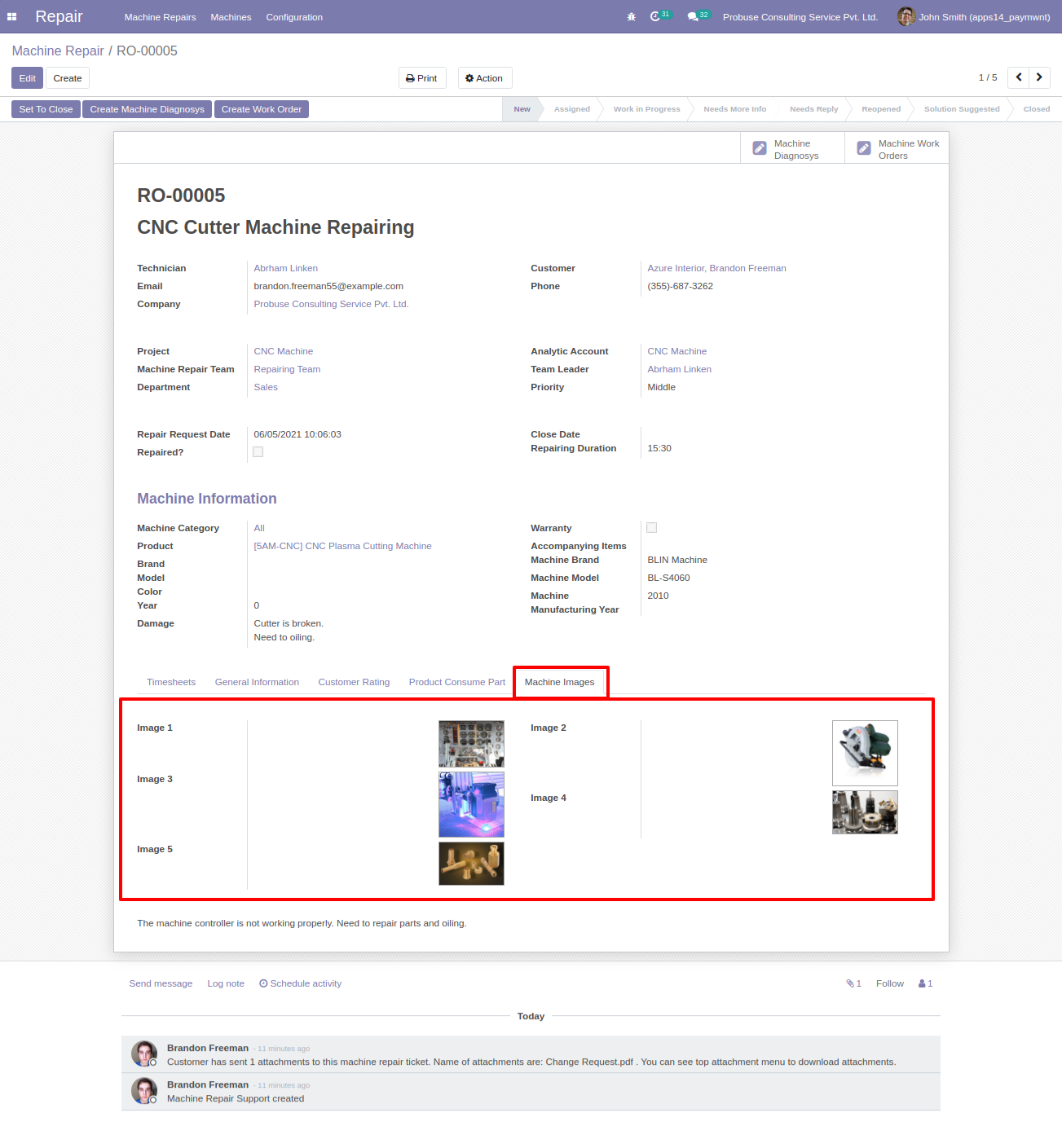
Create Machine Diagnosys Button on Machine Repair Request Form
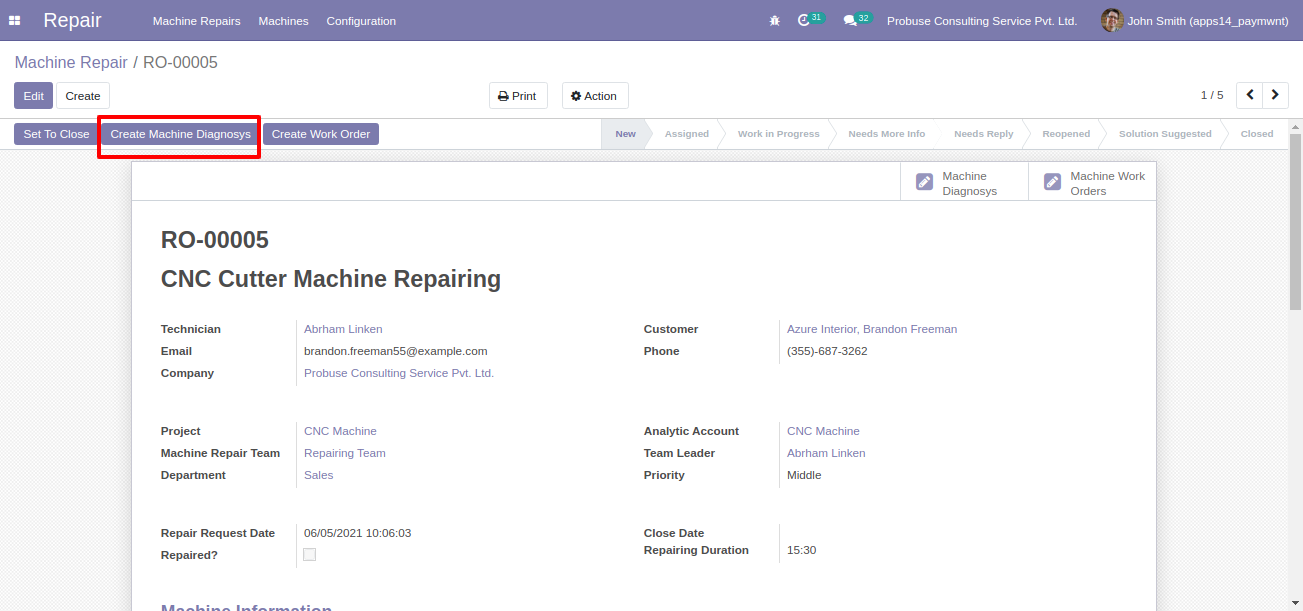
Machine Diagnosys with Repair Estimations Tab
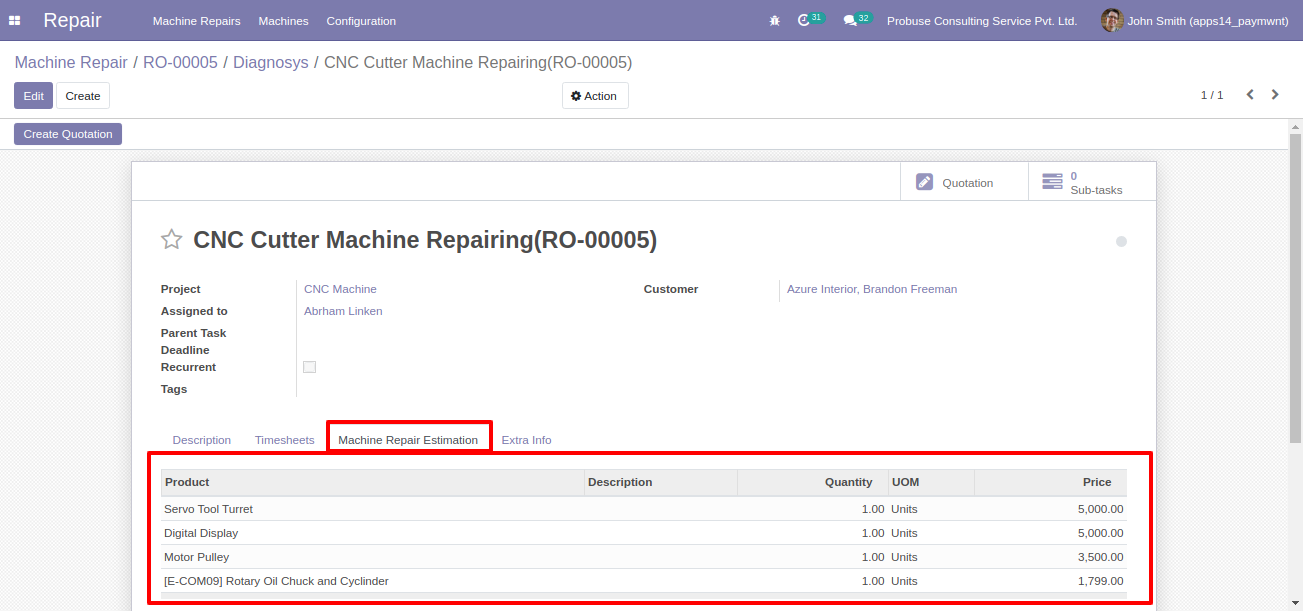
Machine Diagnosys with Timesheet Tab Fill by Repair User and Team
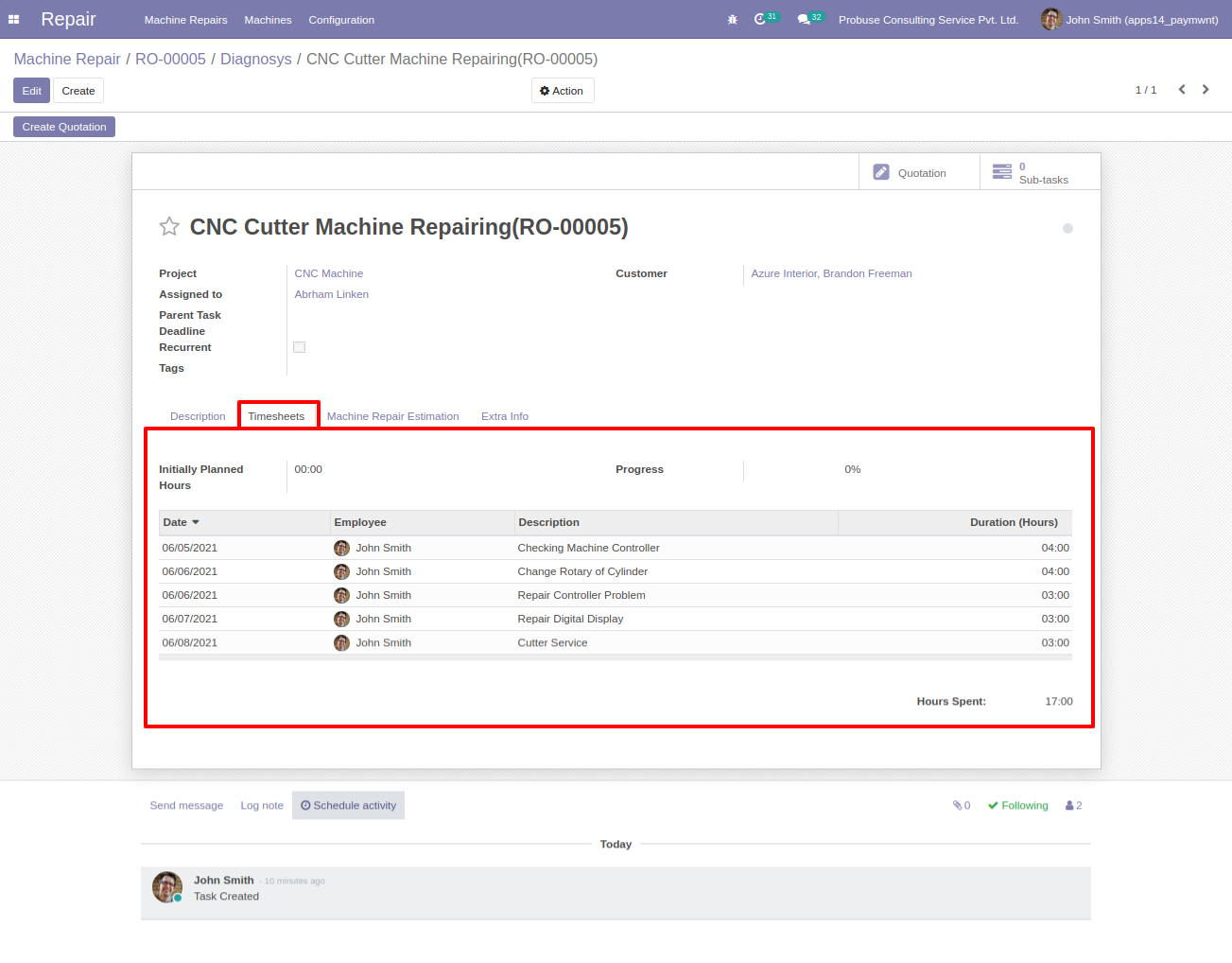
Machine Diagnosys with Extra Info Tab
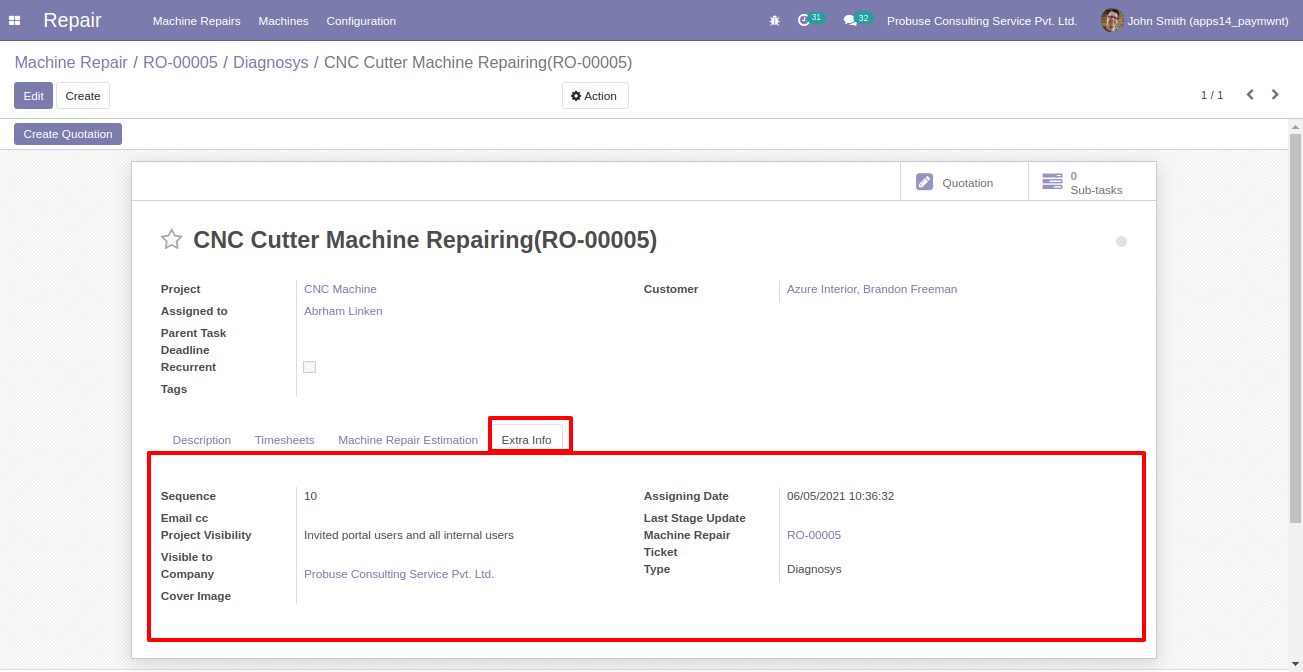
Create Work Order Button on Machine Repair Request
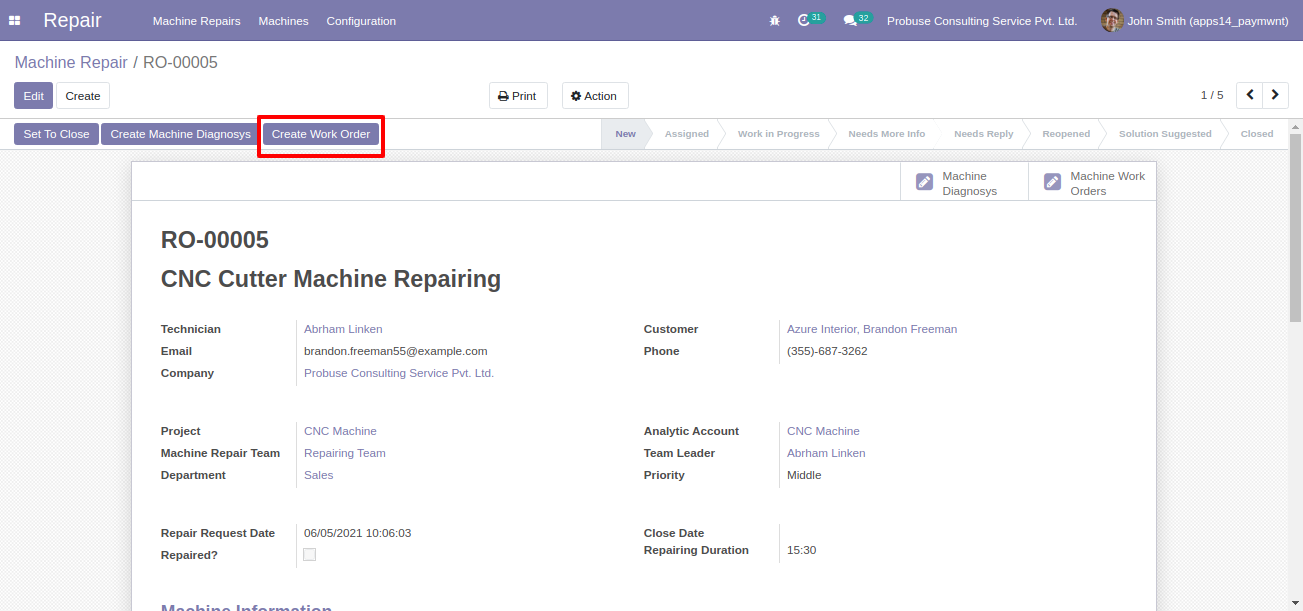
Created Work Order From Machine Repair Request
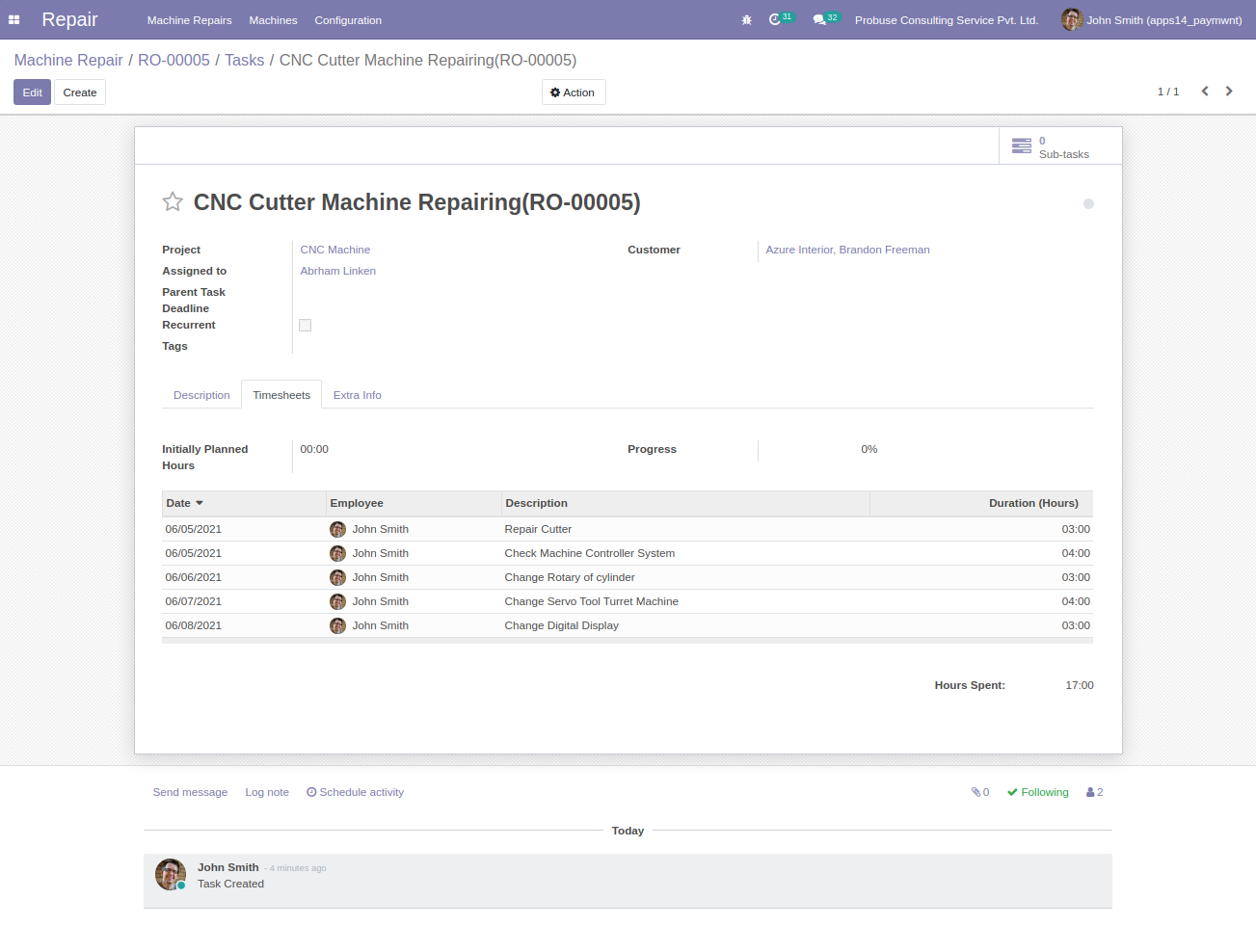
Work Order Extra Info Tab
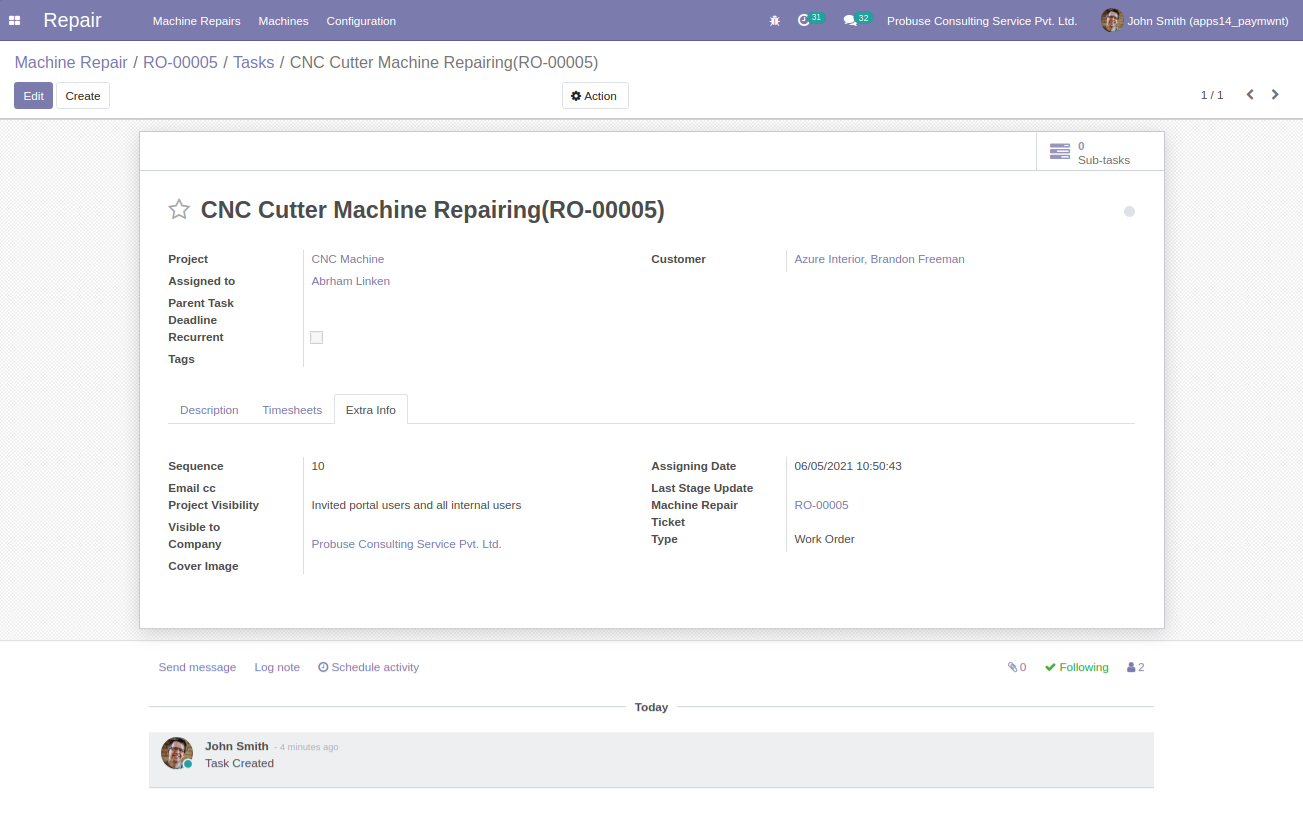
Create Quotation Button on Diagnosys
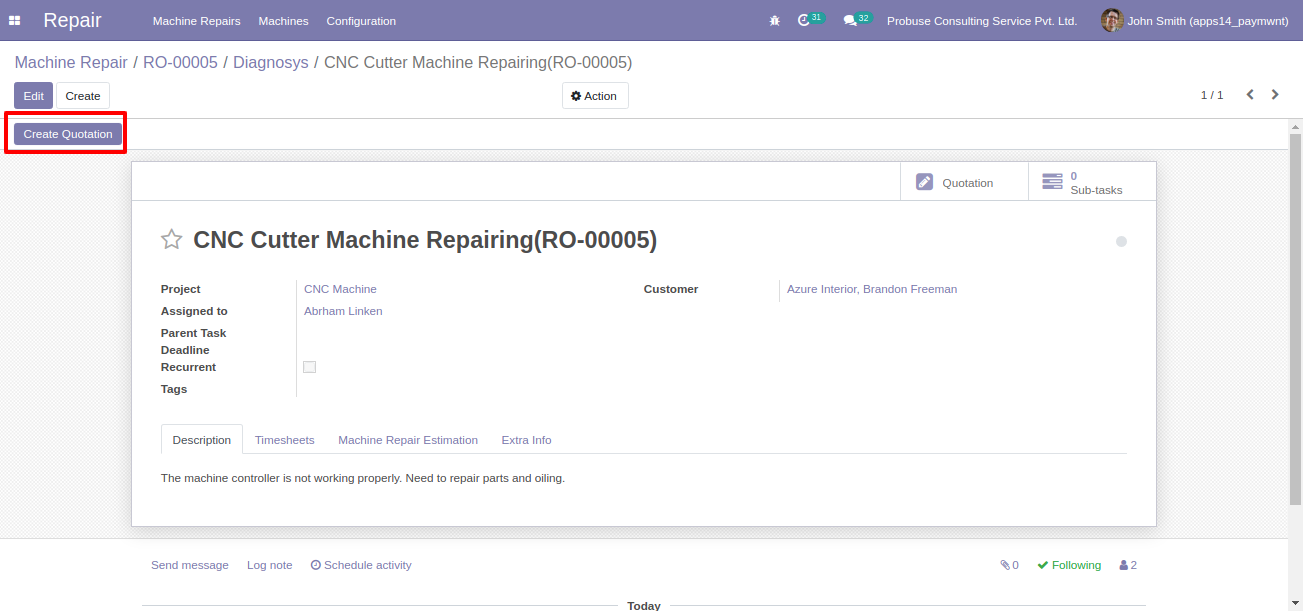
Created Sale Quotation in Odoo Sales App
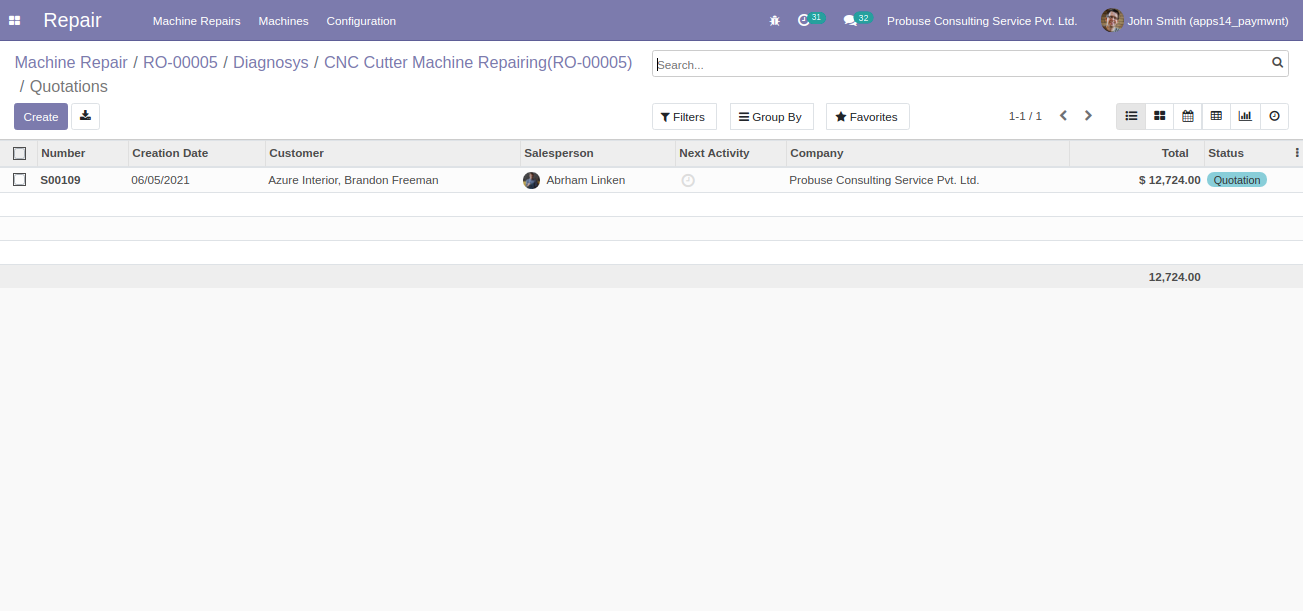
Created Sale Qutation From Machine Diagnosys
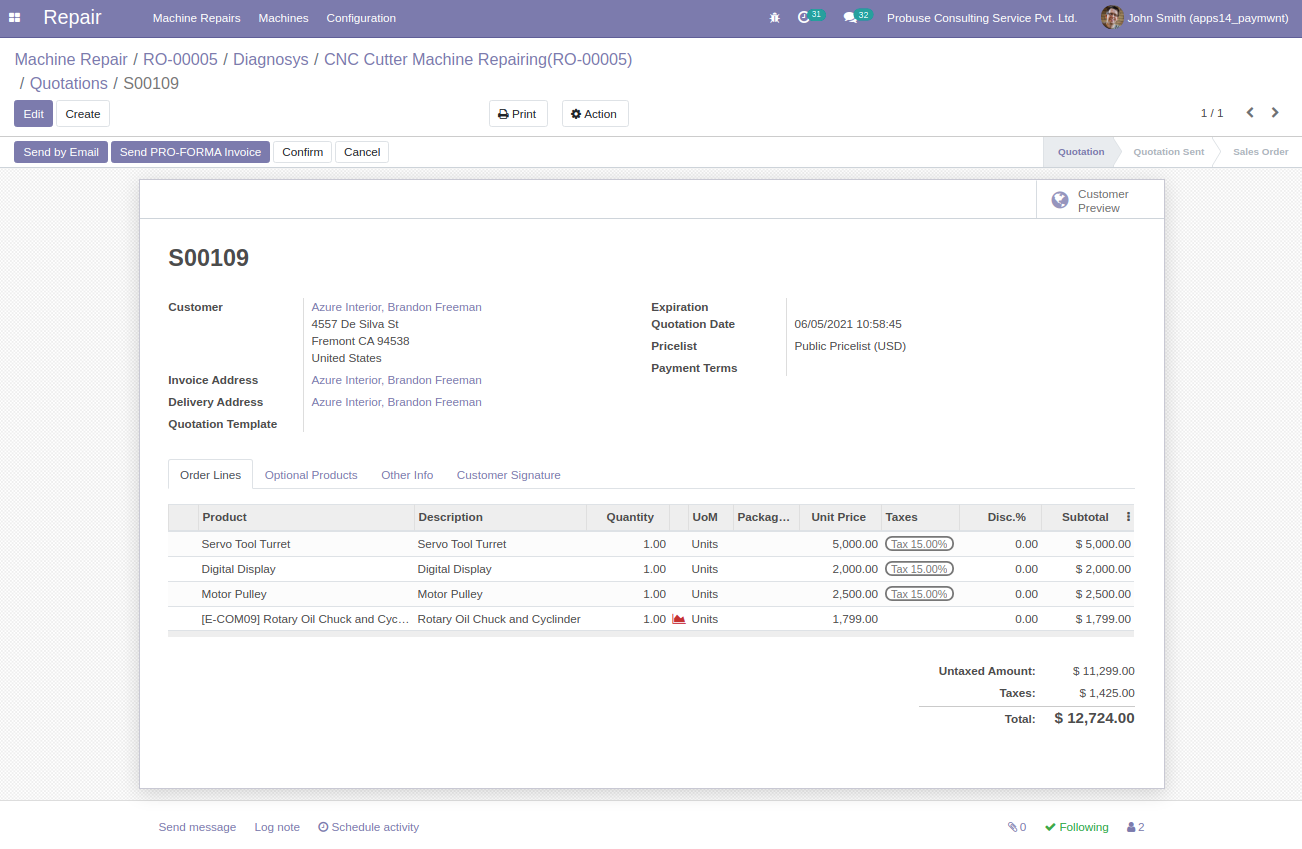
Created Sale Order With Reference of Machine Diagnosys
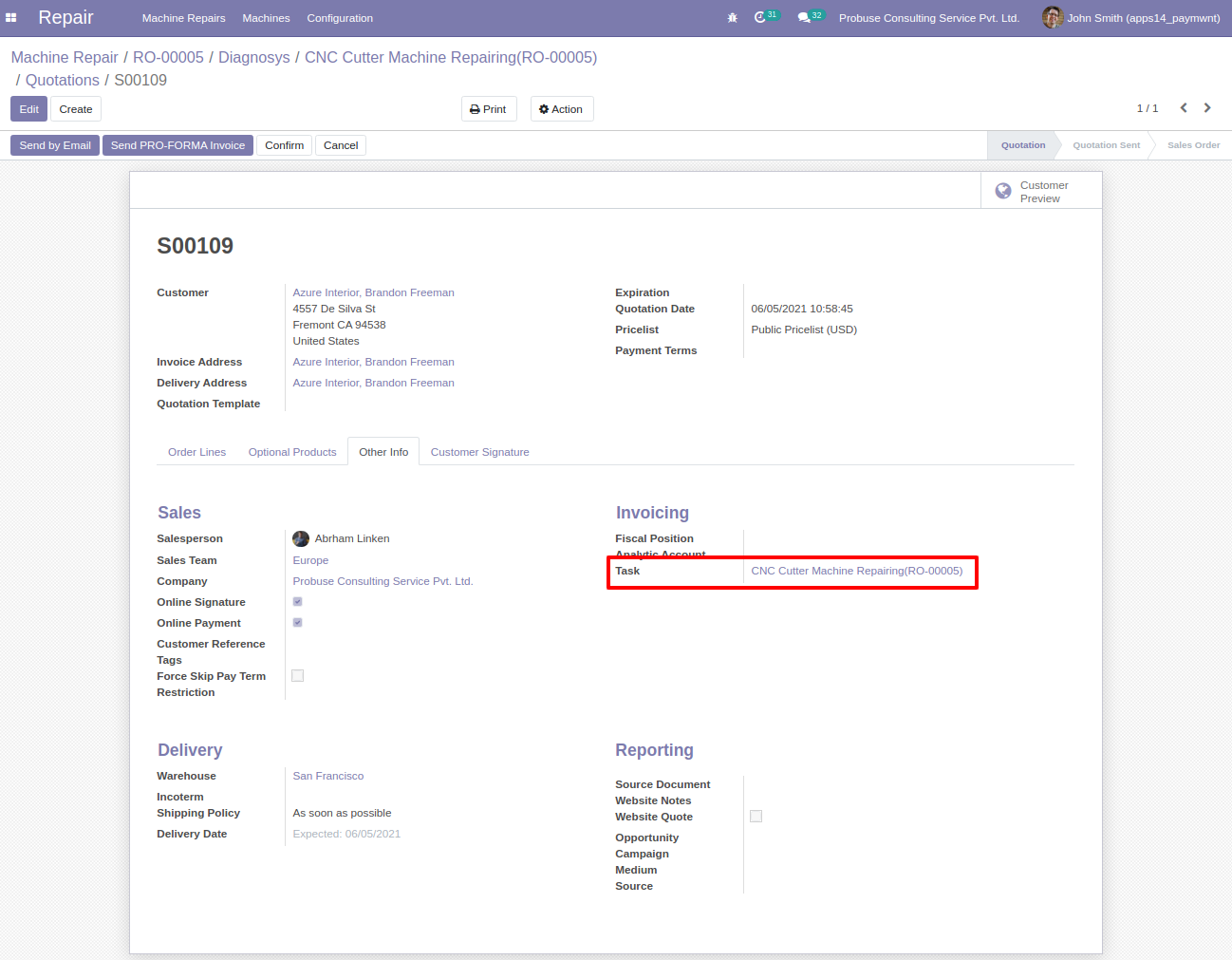
Machines List View
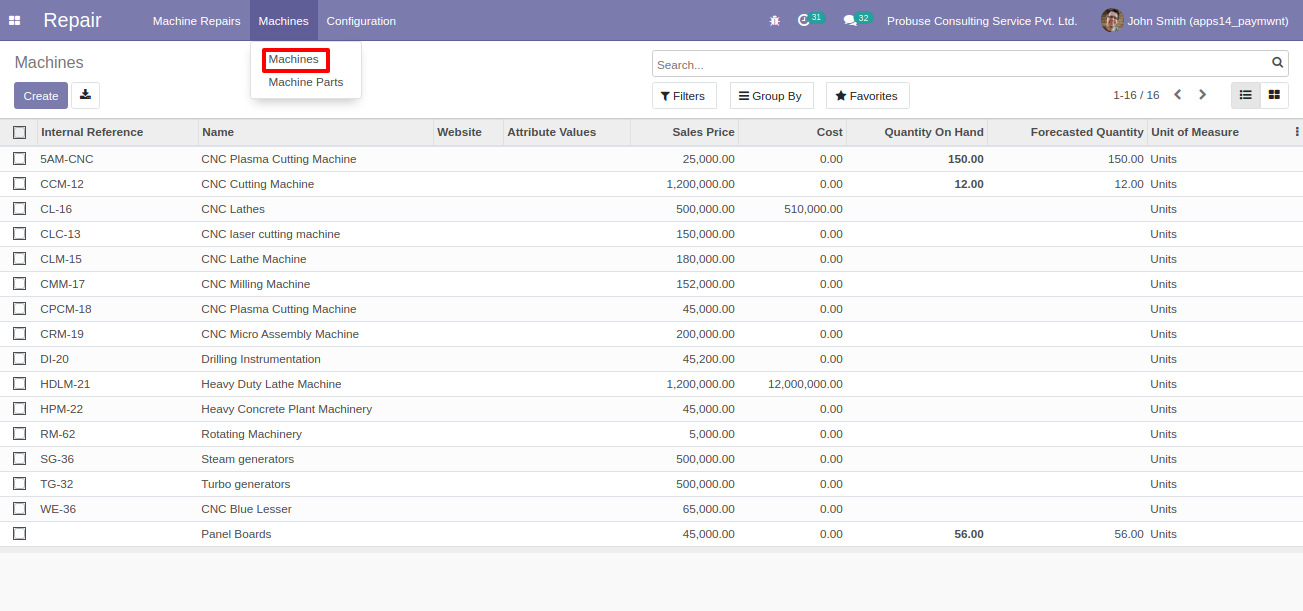
Allow You to Close Machine Request if Job Orders are Done
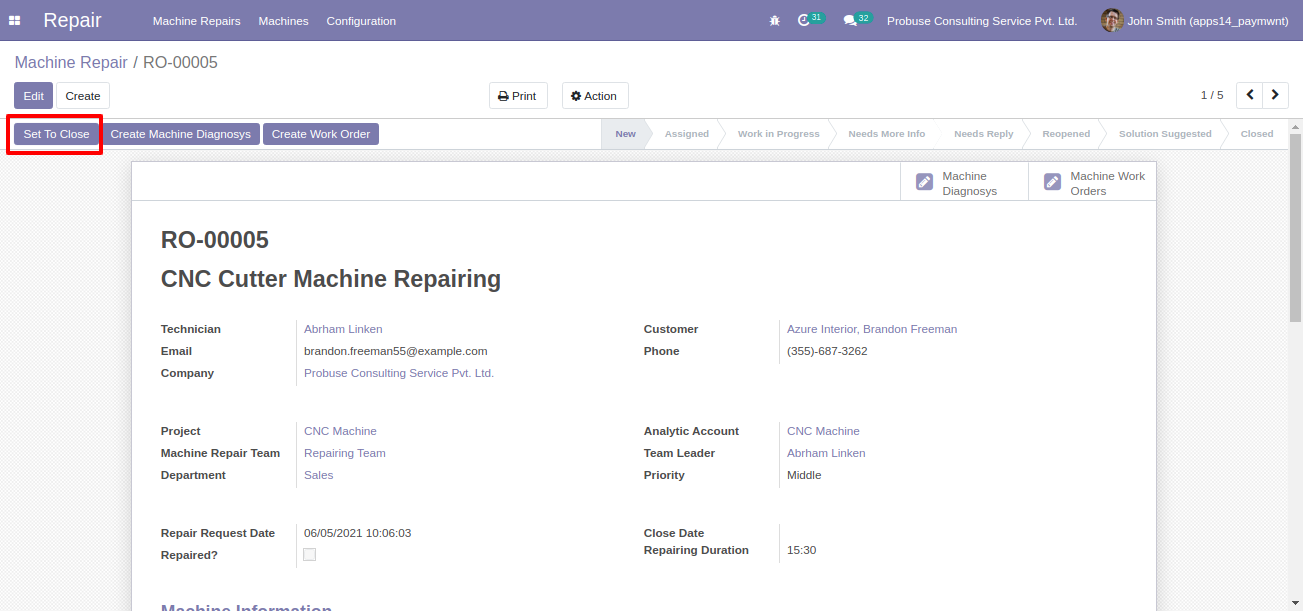
Email Notification sent to Customer on Close of Machine Request
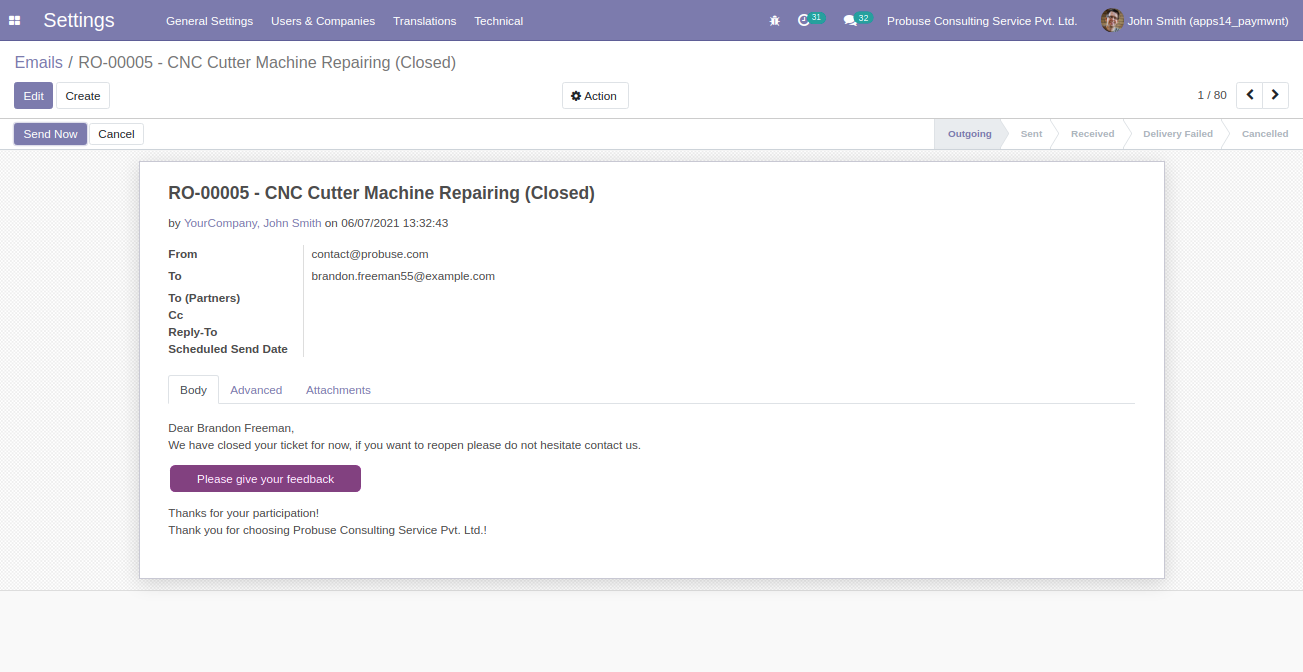
Feedback Link will be Send to Customer for Feedback on Machine Request Close
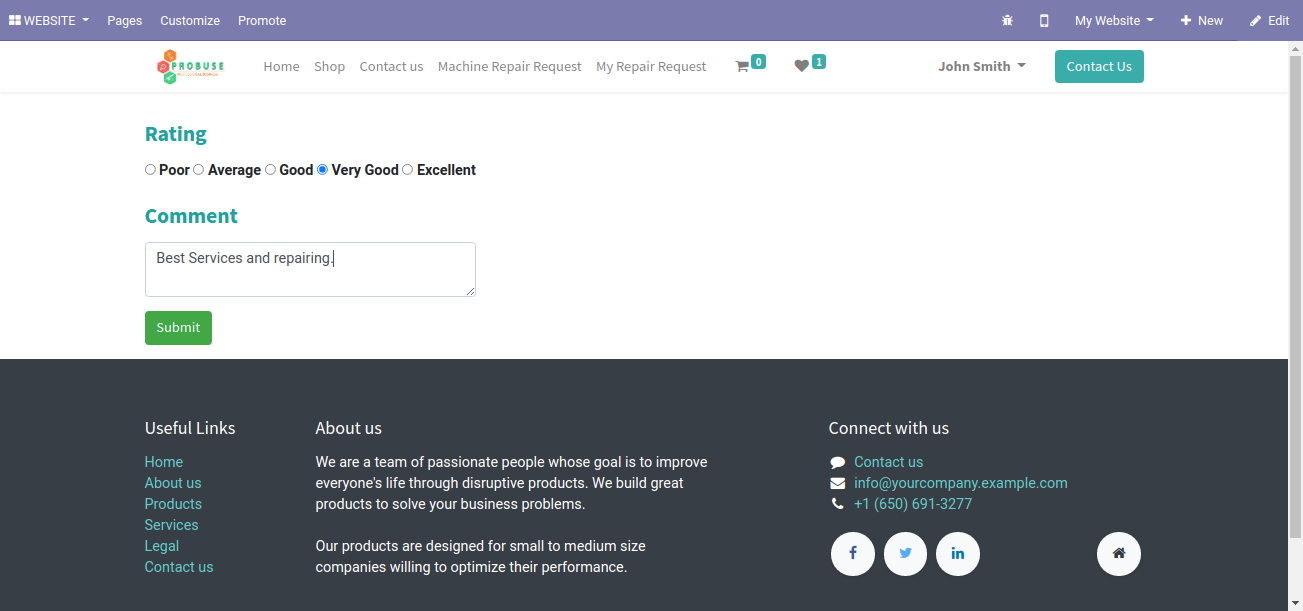
Thank you to Customer for Providing Feedback
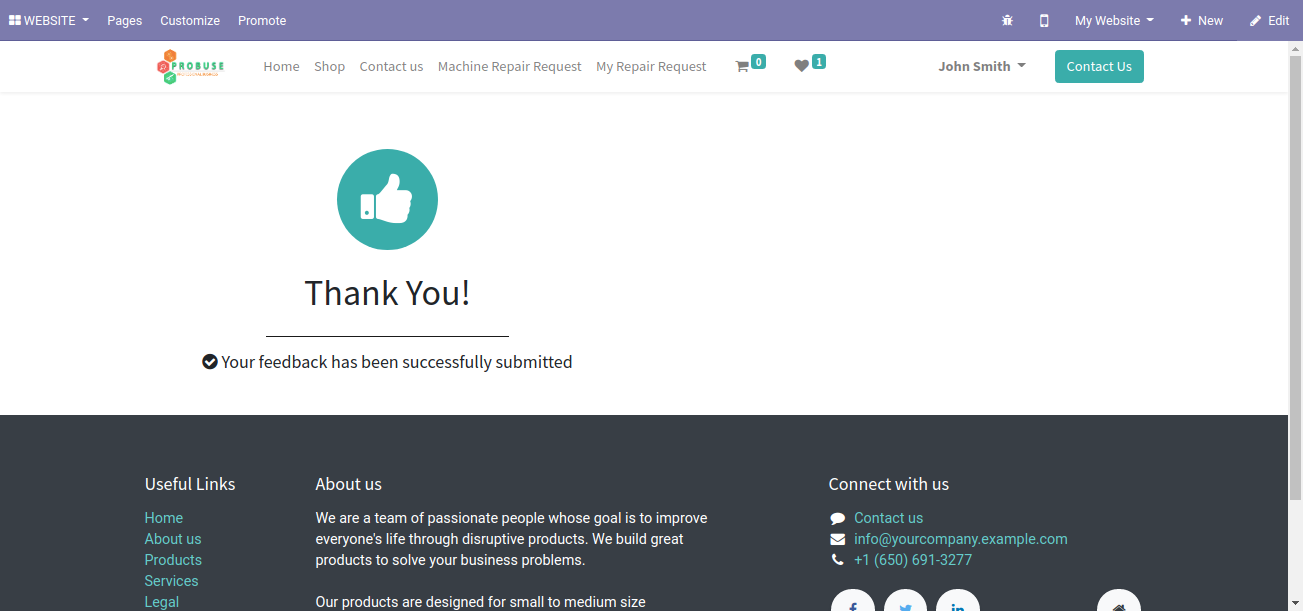
Customer Rating Stored on Repair Request
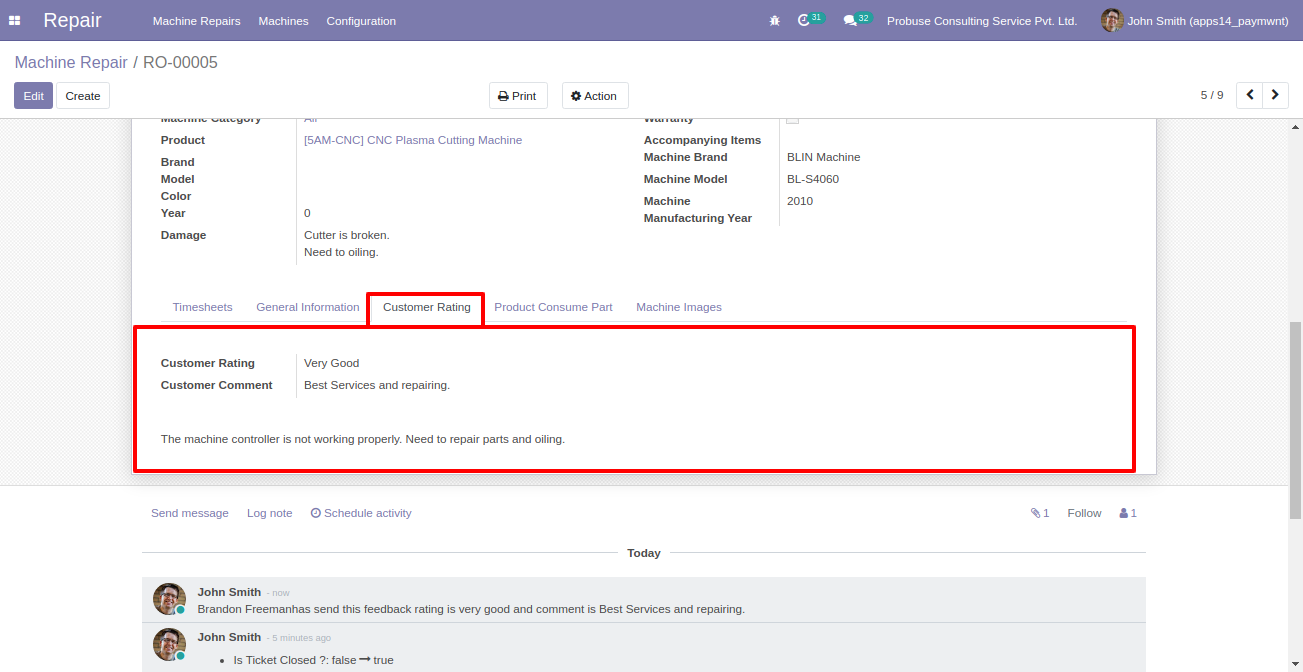
My Repair Request
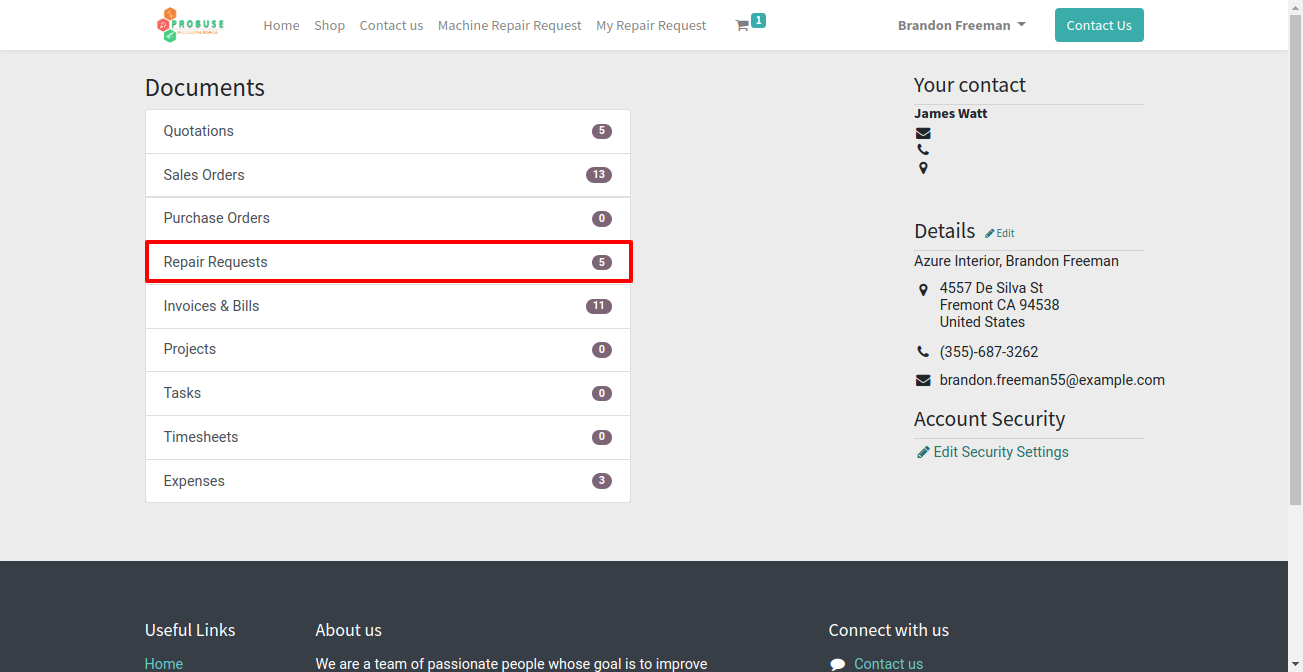
Portal My Account With - My Repair Requests for Customers
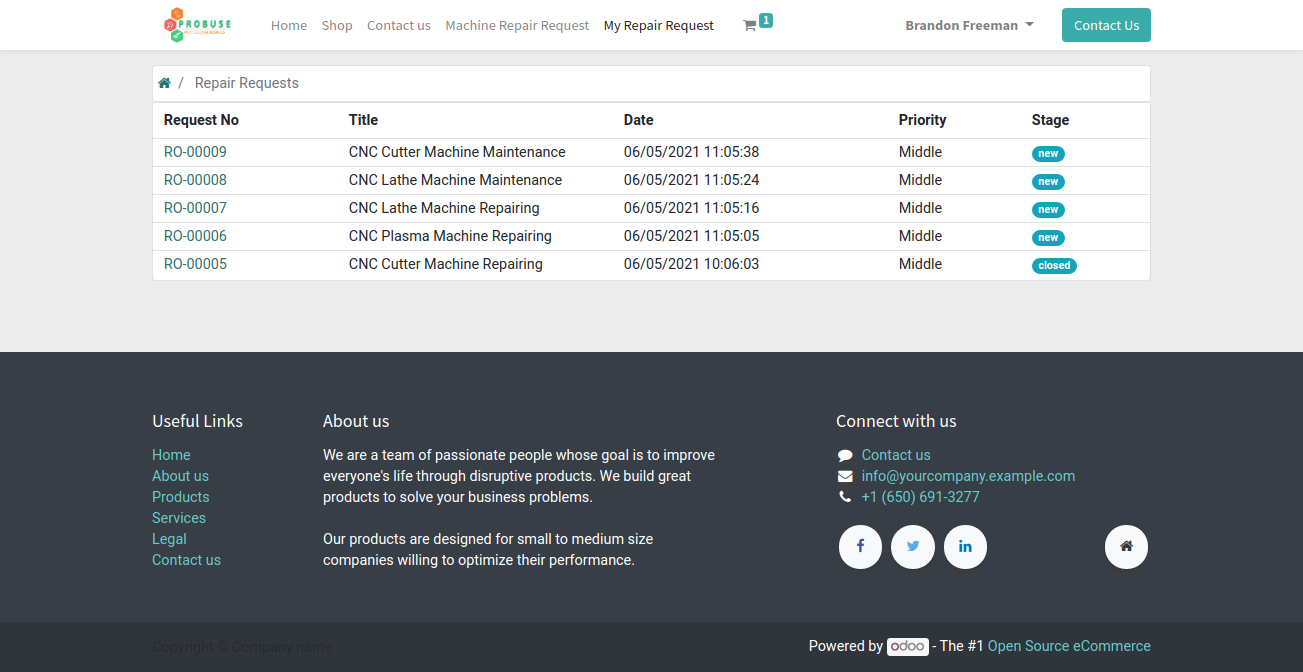
Machine Repair Request Form View
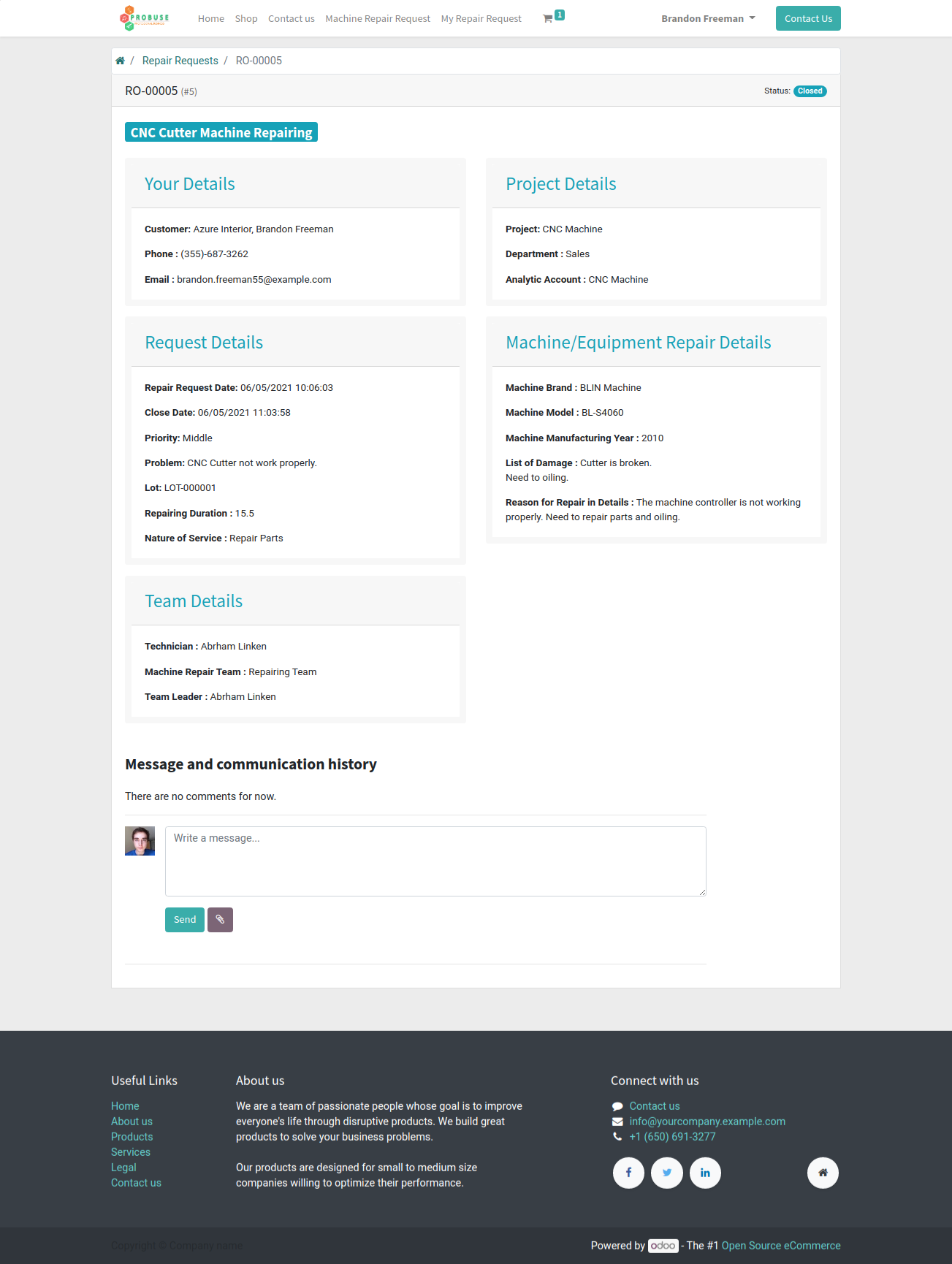
Machine Repair Request Smart Button on Customer
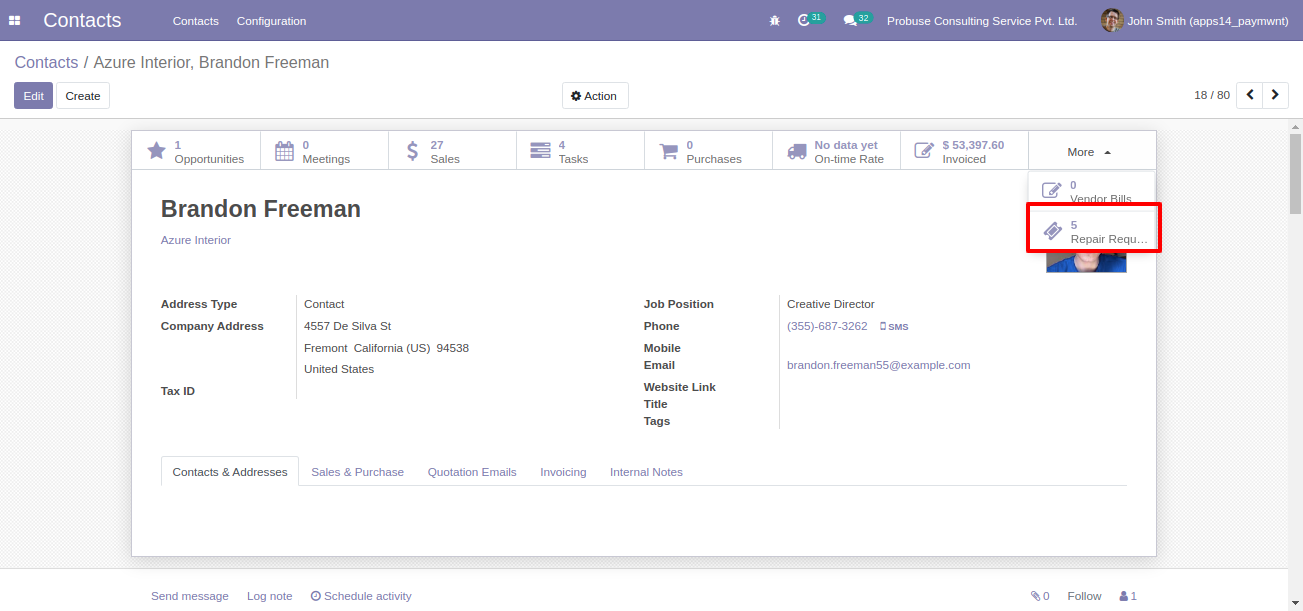
Open Machine Repair Request Form Customer

Machine Repair Request List View
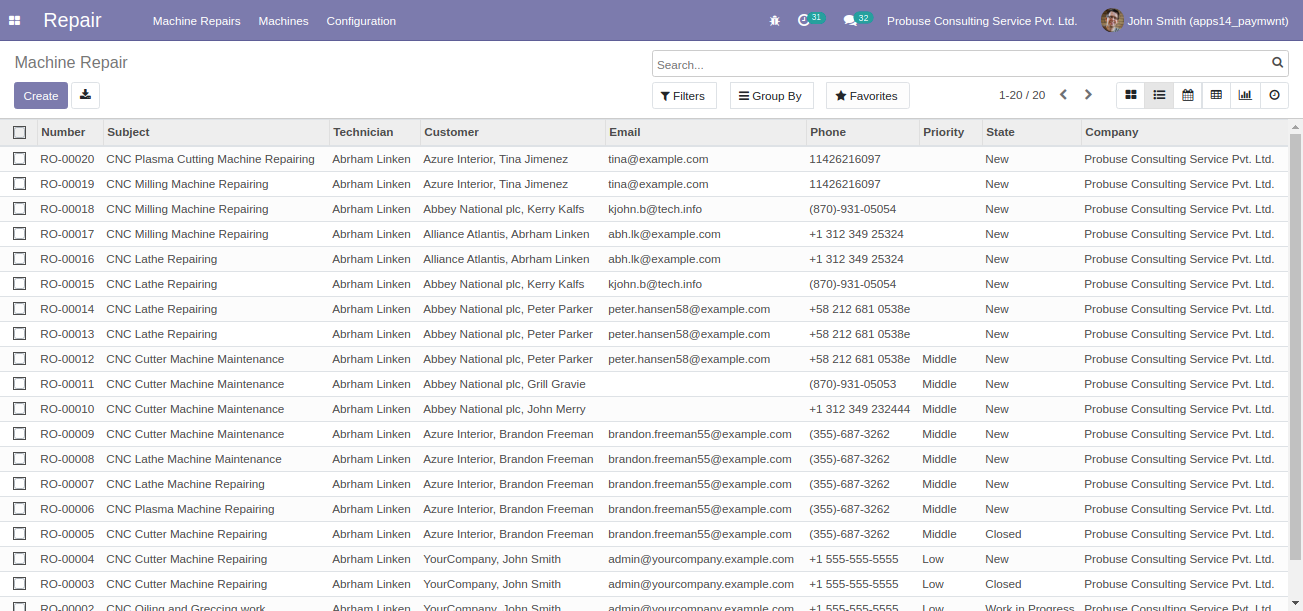
Machine Repair Request - Kanban View
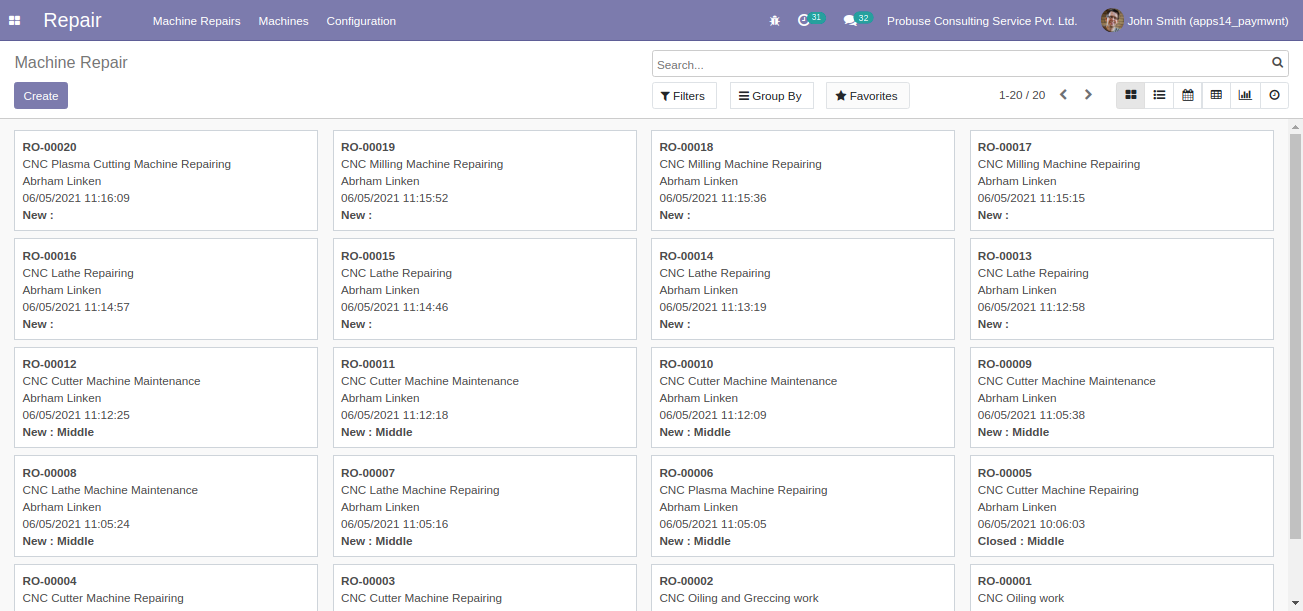
Machine Repair Request - Pivot View
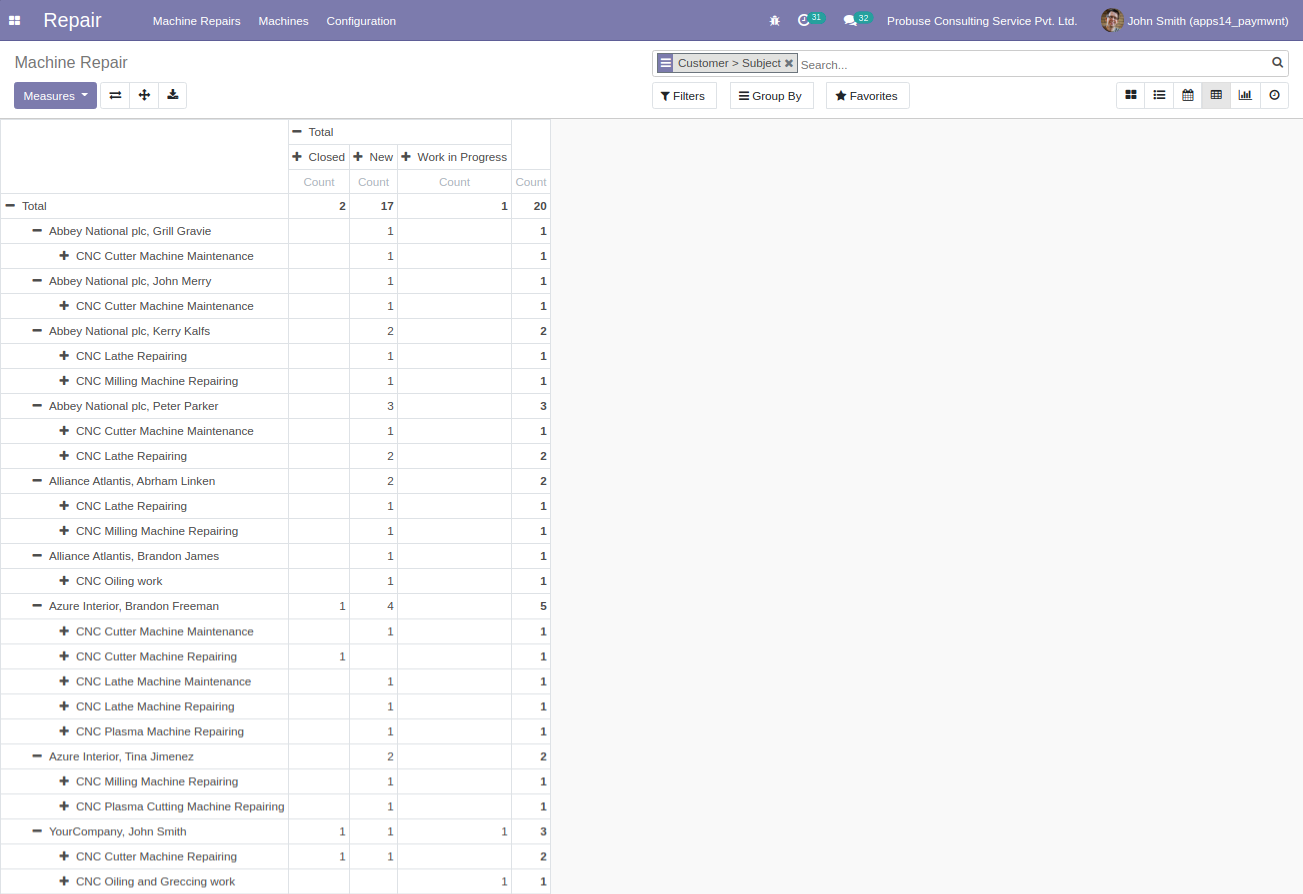
Machine Repair Request Graph - Bar Chart View
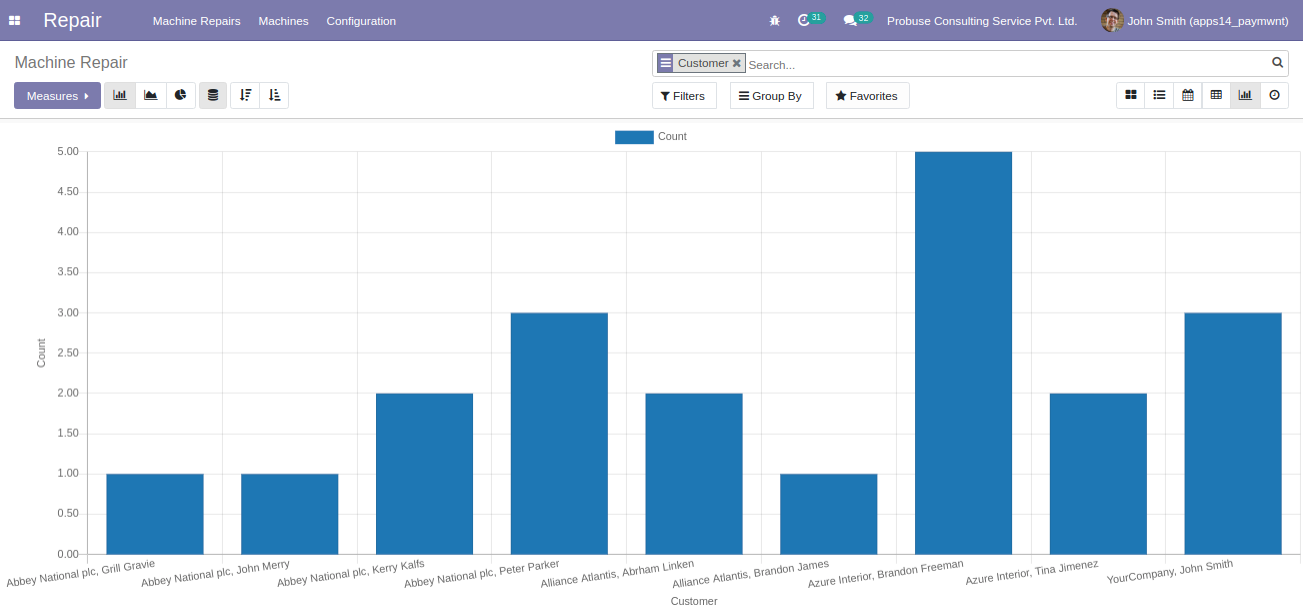
Machine Repair Request Graph - Line Chart View
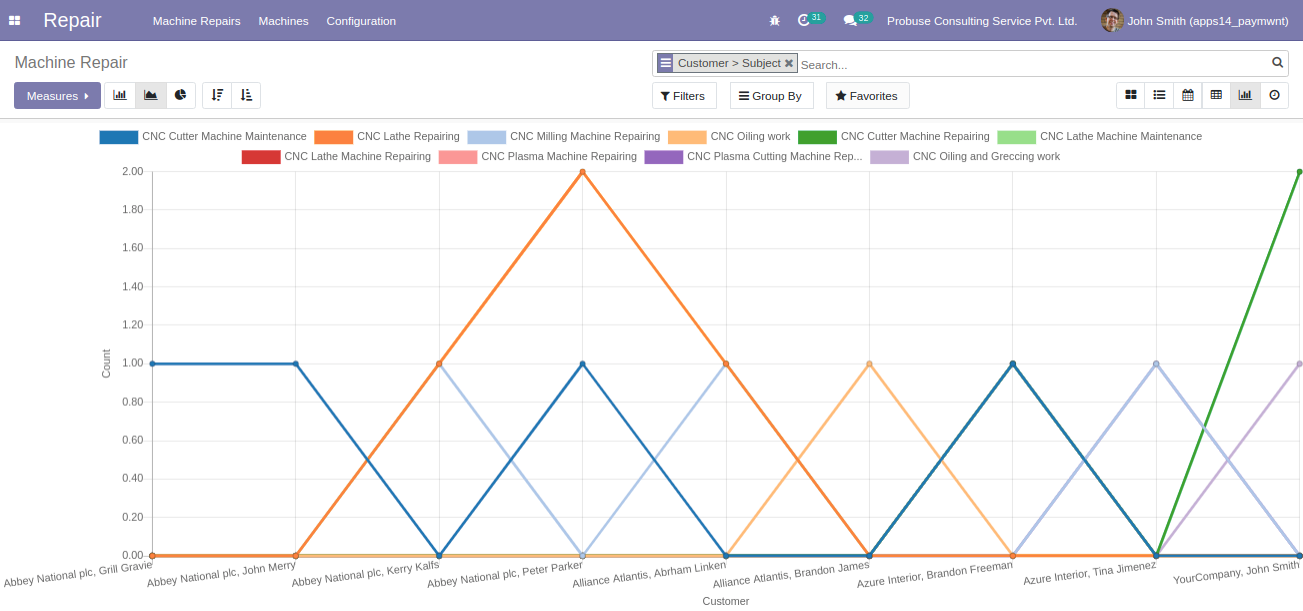
Machine Repair Request Report

Print PDF Report Menu
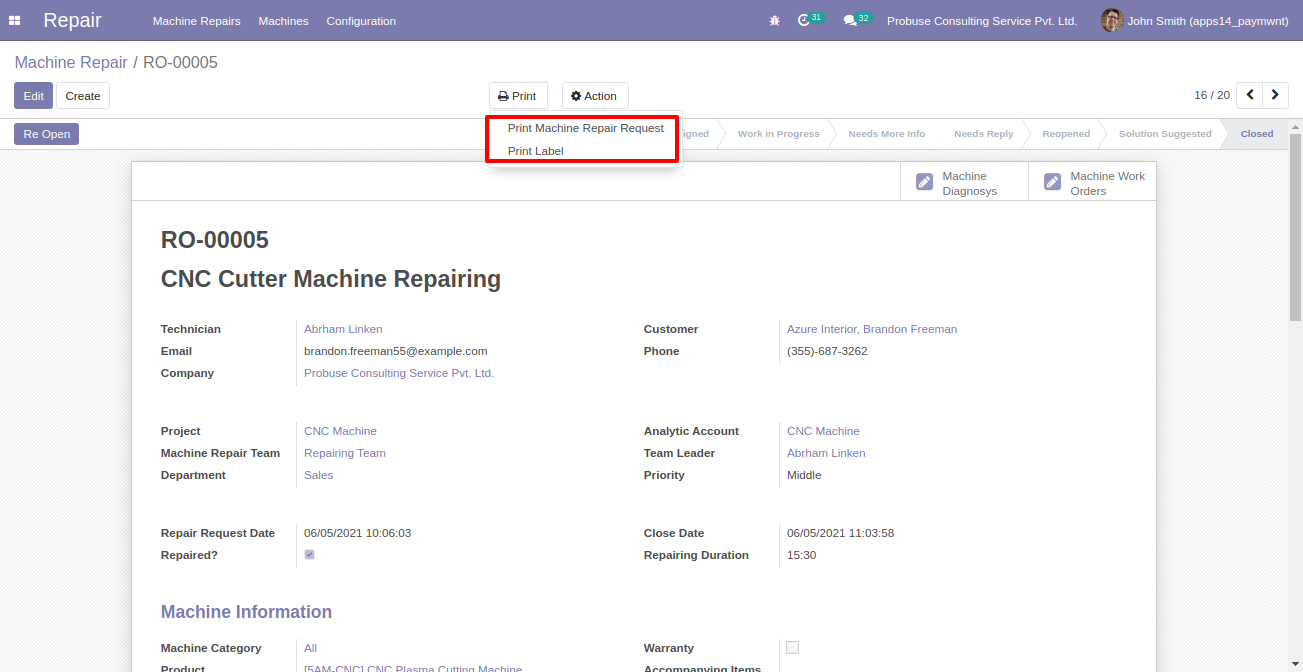
Machine Repair Request Report

Machine Repair Request Report
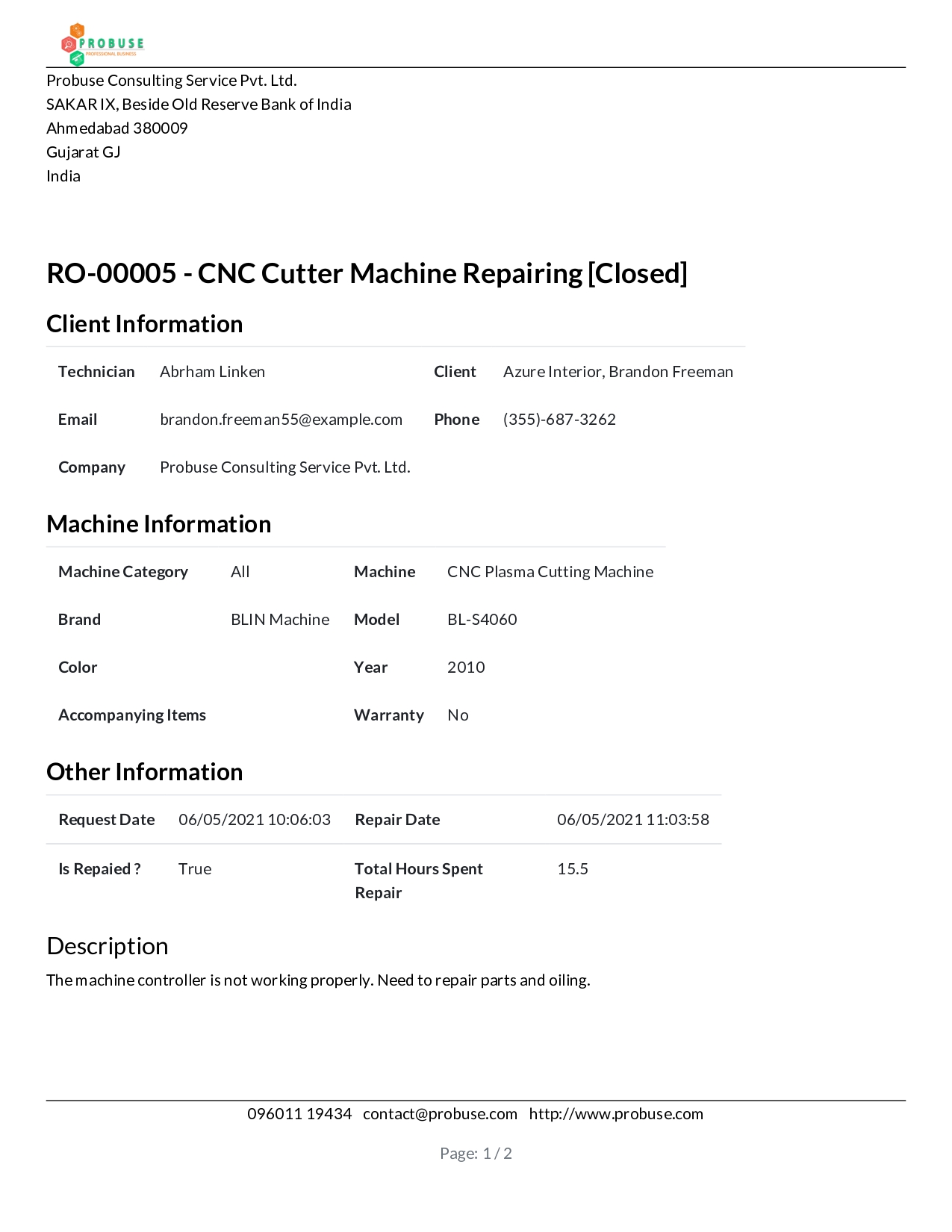
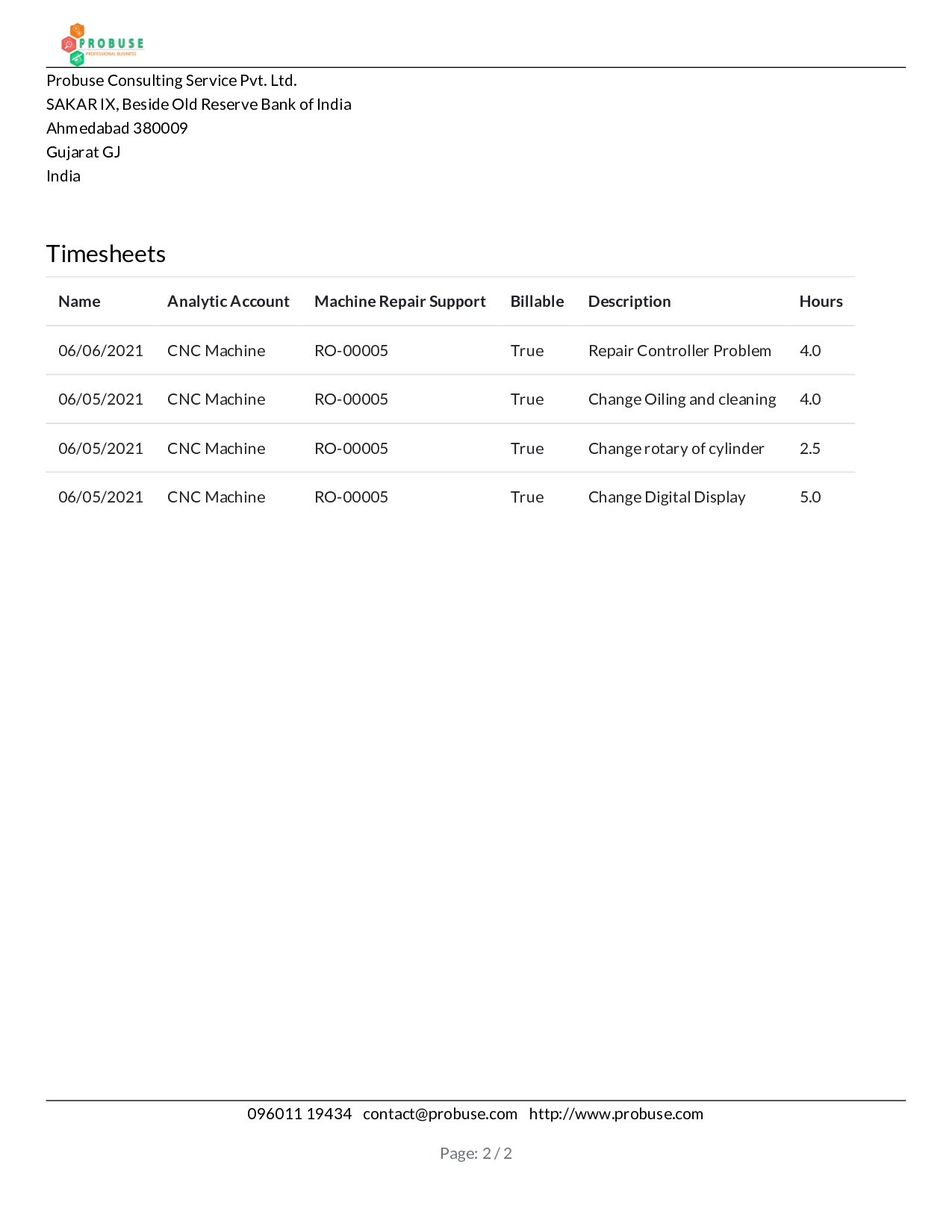
Contact / Support
Introducing
Probuse Consulting Services Pvt. Ltd.
If you need any help or want more additional features, you may contact us through:
Email: contact@probuse.com
Website: www.probuse.com
Skype: mustufa_probuse
Probuse Consulting Service Pvt Ltd is an Software and Web development specialist which offers complete business application together. We are well experienced to provide a face for your business on the software and Internet level.
Probuse Consulting Service Pvt Ltd is a specialist in Odoo/OpenERP services and could give your business open source hand to drive.
Our Services
This is an unofficial translation of the GNU Lesser General Public License into Vietnamese. It was not published by the Free Software Foundation,
and does not legally state the distribution terms for software that uses the GNU LGPL - only the original English text of the GNU LGPL does
that. However, we hope that this translation will help language speakers understand the GNU LGPL better.
GNU LESSER GENERAL PUBLIC LICENSE
Version 3, 29 June
2007
Copyright (C) 2007 Free Software Foundation, Inc. <https://fsf.org/>
Everyone is permitted to copy and distribute verbatim copies of this license document, but changing it is not allowed.
This version of the GNU Lesser General Public License incorporates the terms and conditions of version 3 of the GNU General Public License,
supplemented by the additional permissions listed below.
0. Additional Definitions.
As used herein,"this License" refers to version 3 of the GNU Lesser General Public License, and the "GNU GPL" refers to version 3 of
the GNU "General" Public License.
"The Library" refers to a covered work governed by this License, other than an Application or a Combined Work as defined below.
An "Application" is any work that makes use of an interface provided by the Library, but which is not otherwise based on the Library.
Defining a subclass of a class defined by the Library is deemed a mode of using an interface provided by the Library.
A "Combined Work" is a work produced by combining or linking an Application with the Library. The particular version of the Library
with which the Combined Work was made is also called the "Linked Version".
The "Minimal Corresponding Source" for a Combined Work means the Corresponding Source for the Combined Work, excluding any source code
for portions of the Combined Work that, considered in isolation, are based on the Application, and not on the Linked Version.
The "Corresponding Application Code" for a Combined Work means the object code and/or source code for the Application, including any data
and utility programs needed for reproducing the Combined Work from the Application, but excluding the System Libraries of the Combined Work.
1. Exception to Section 3 of the GNU GPL.
You may convey a covered work under sections 3 and 4 of this License without being bound by section 3 of the GNU GPL.
2. Conveying Modified Versions.
If you modify a copy of the Library, and, in your modifications, a facility refers to a function or data to be supplied by an Application that
uses the facility (other than as an argument passed when the facility is invoked), then you may convey a copy of the modified version:
a) under this License, provided that you make a good faith effort to ensure that, in the event an Application does not supply the function or data, the facility still
operates, and performs whatever part of its purpose remains meaningful, or
b) under the GNU GPL, with none of the additional permissions of this License applicable to that copy.
3. Object Code Incorporating Material from Library Header Files.
The object code form of an Application may incorporate material from a header file that is part of the Library. You may convey such
object code under terms of your choice, provided that, if the incorporated material is not limited to numerical parameters, data structure
layouts and accessors, or small macros, inline functions and templates (ten or fewer lines in length), you do both of the following:
a) Give prominent notice with each copy of the object code that the Library is used in it and that the Library and its use are covered by this License.
b) Accompany the object code with a copy of the GNU GPL and this license document.
4. Combined Works.
You may convey a Combined Work under terms of your choice that, taken together, effectively do not restrict modification of the portions of the
Library contained in the Combined Work and reverse engineering for debugging such modifications, if you also do each of the following:
a) Give prominent notice with each copy of the Combined Work that the Library is used in it and that the Library and its use are covered by this License.
b) Accompany the Combined Work with a copy of the GNU GPL and this license document.
c) For a Combined Work that displays copyright notices during execution, include the copyright notice for the Library among these notices,
as well as a reference directing the user to the copies of the GNU GPL and this license document.
d) Do one of the following:
0) Convey the Minimal Corresponding Source under the terms of this License, and the Corresponding Application Code in a form suitable for, and
under terms that permit, the user to recombine or relink the Application with a modified version of the Linked Version to produce a modified
Combined Work, in the manner specified by section 6 of the GNU GPL for conveying Corresponding Source.
1) Use a suitable shared library mechanism for linking with the Library. A suitable mechanism is one that (a) uses at run time a copy of the
Library already present on the user's computer system, and (b) will operate properly with a modified version of the Library
that is interface-compatible with the Linked Version.
e) Provide Installation Information, but only if you would otherwise be required to provide such information under section 6 of the
GNU GPL, and only to the extent that such information is necessary to install and execute a modified version of the Combined Work produced by
recombining or relinking the Application with a modified version of the Linked Version. (If you use option 4d0, the Installation Information
must accompany the Minimal Corresponding Source and Corresponding Application Code. If you use option 4d1, you must provide the Installation
Information in the manner specified by section 6 of the GNU GPL for conveying Corresponding Source.)
5. Combined Libraries.
You may place library facilities that are a work based on the Library side by side in a single library together with other library facilities that
are not Applications and are not covered by this License, and convey such a combined library under terms of your choice, if you do both of
the following:
a)Accompany the combined library with a copy of the same work based on the Library, uncombined with any other library facilities,
conveyed under the terms of this License.
b) Give prominent notice with the combined library that part of it is a work based on the Library, and explaining where to find the accompanying
uncombined form of the same work.
6. Revised Versions of the GNU Lesser General Public License.
The Free Software Foundation may publish revised and/or new versions of the GNU Lesser General Public License from time to time. Such new
versions will be similar in spirit to the present version, but may differ in detail to address new problems or concerns.
Each version is given a distinguishing version number. If the Library as you received it specifies that a certain numbered
version of the GNU Lesser General Public License "or any later version" applies to it, you have the option of following the terms and
conditions either of that published version or of any later version published by the Free Software Foundation. If the Library as you
received it does not specify a version number of the GNU Lesser General Public License, you may choose any version of the GNU Lesser
General Public License ever published by the Free Software Foundation.
If the Library as you received it specifies that a proxy can decide whether future versions of the GNU Lesser General Public License shall
apply, that proxy's public statement of acceptance of any version is permanent authorization for you to choose that version for the Library.
